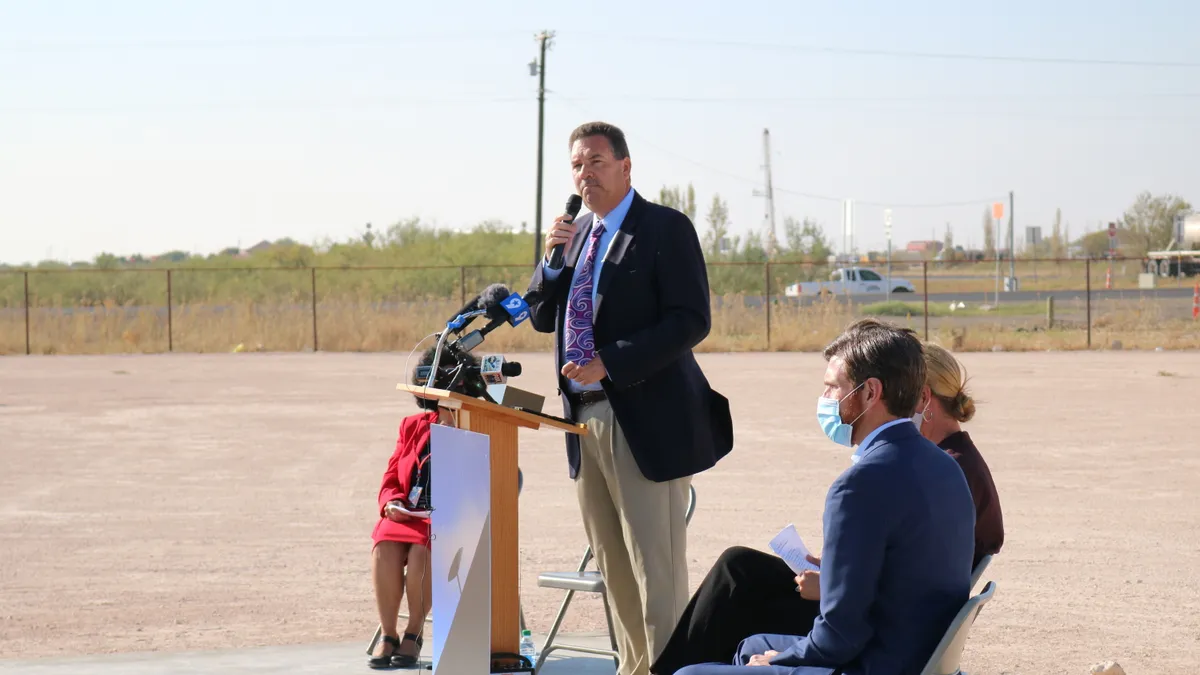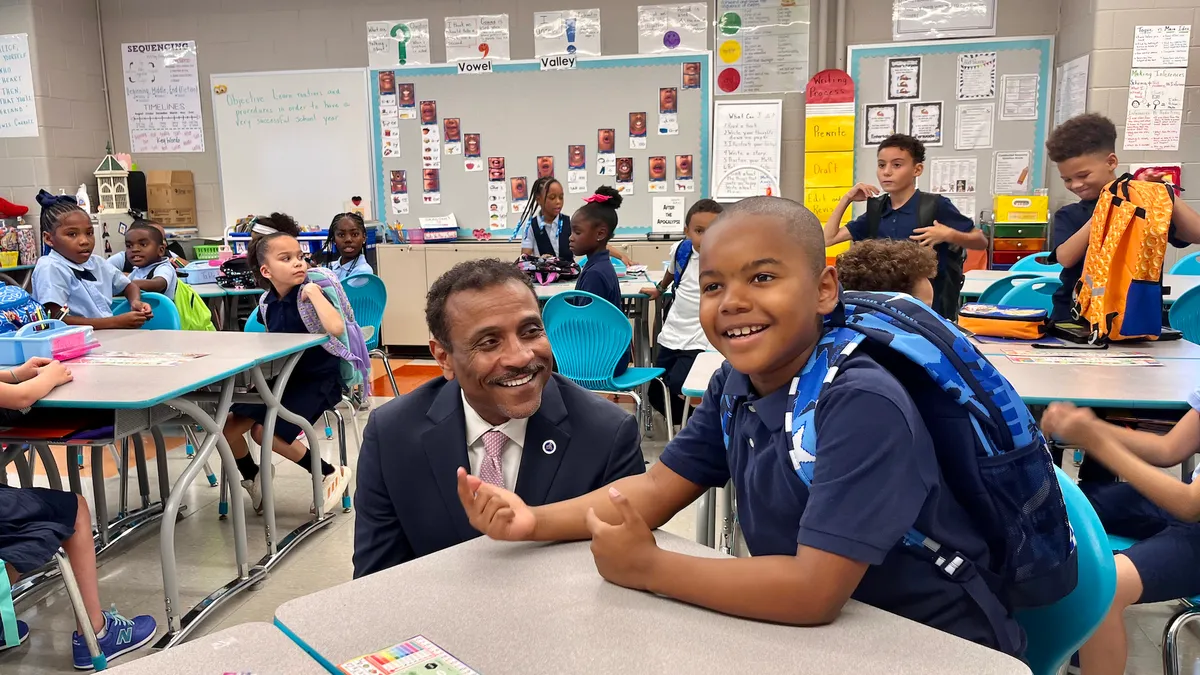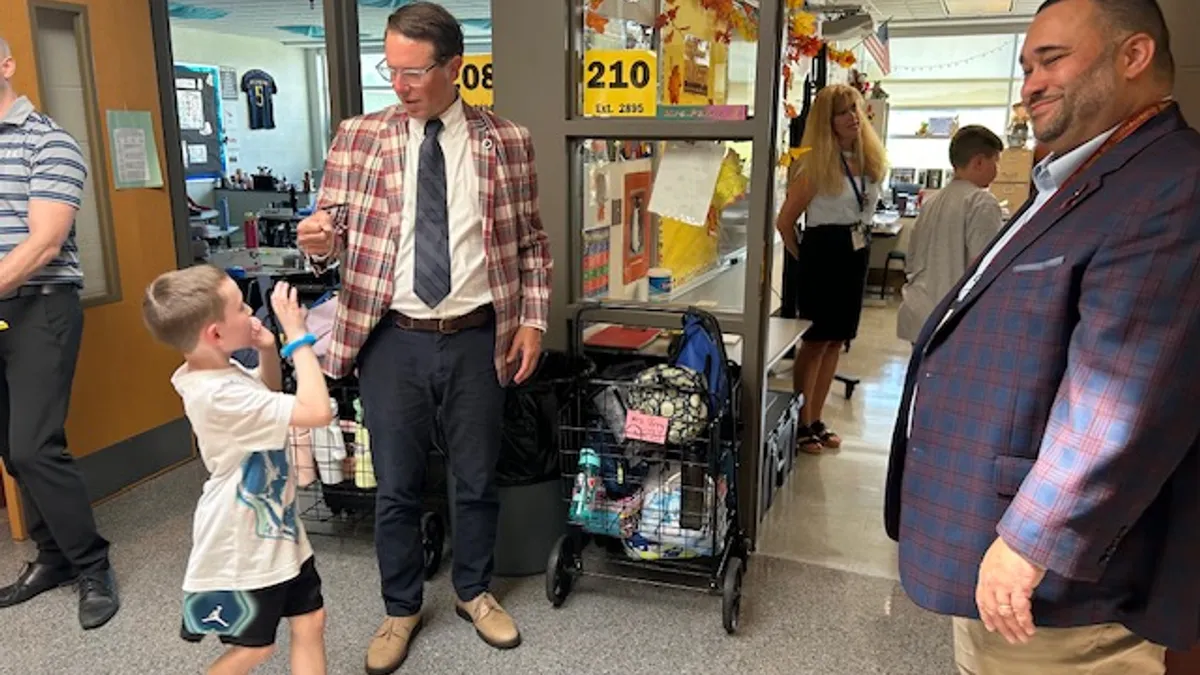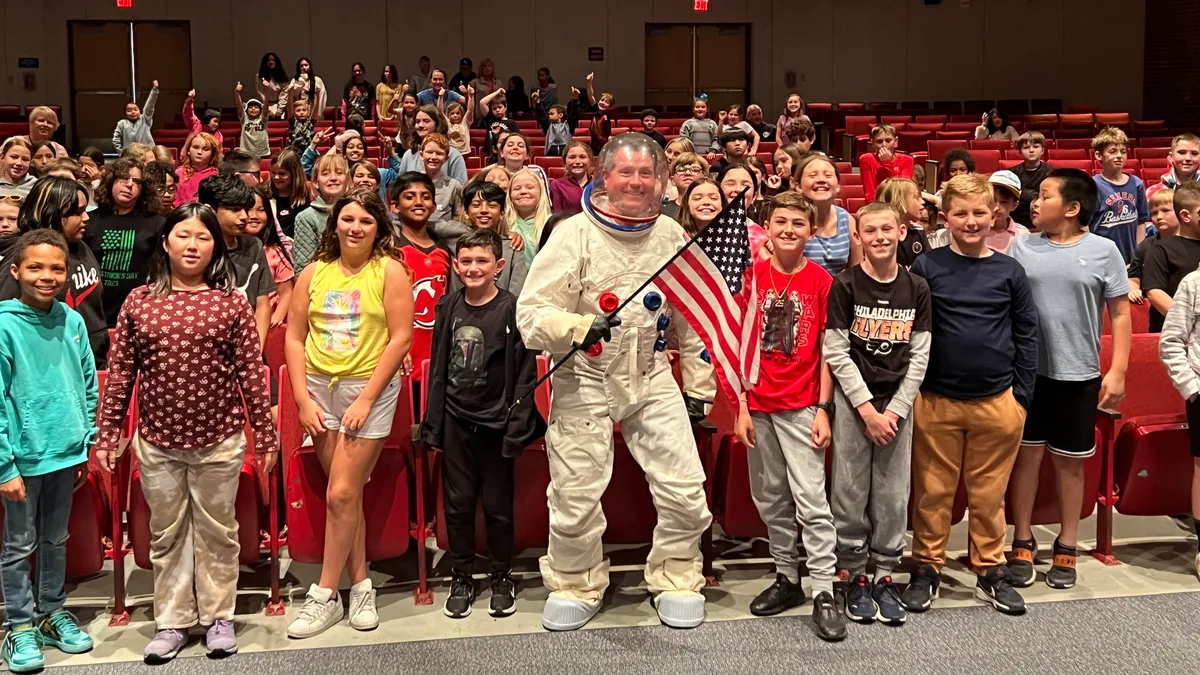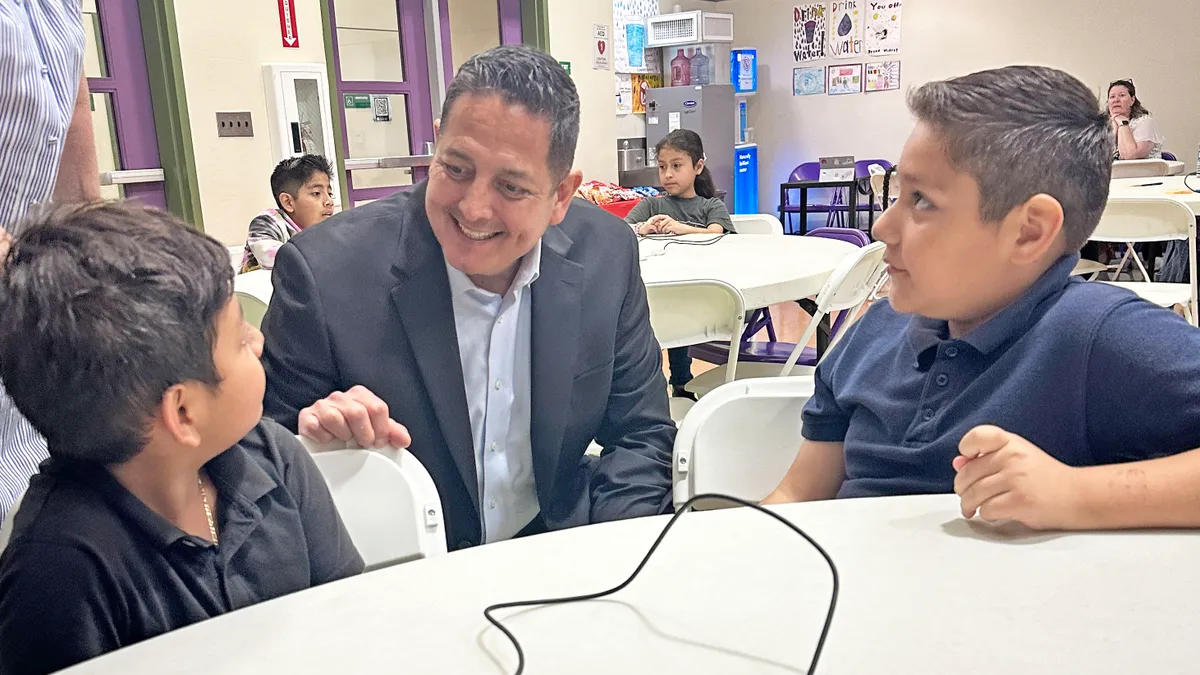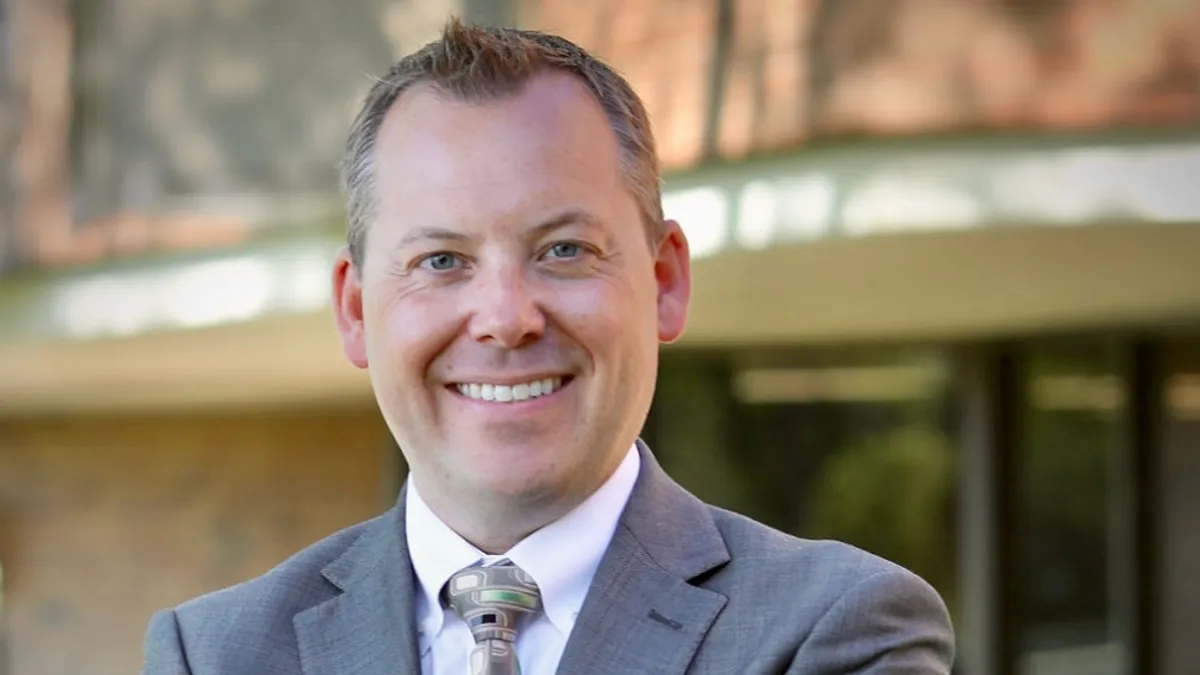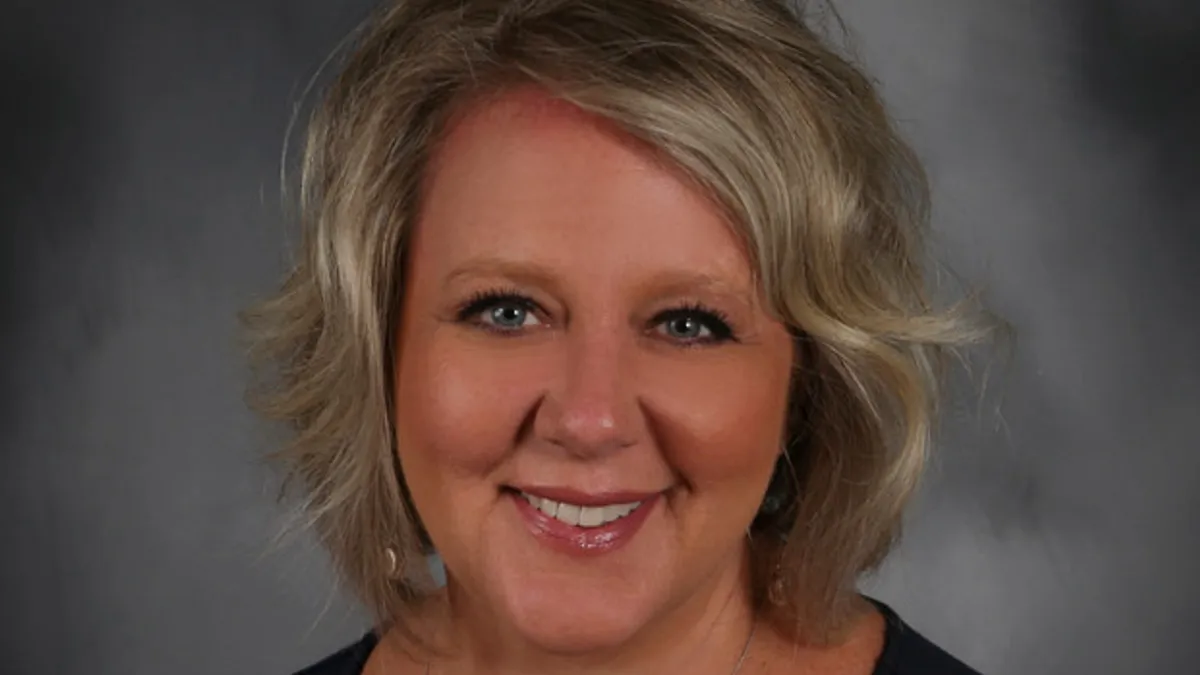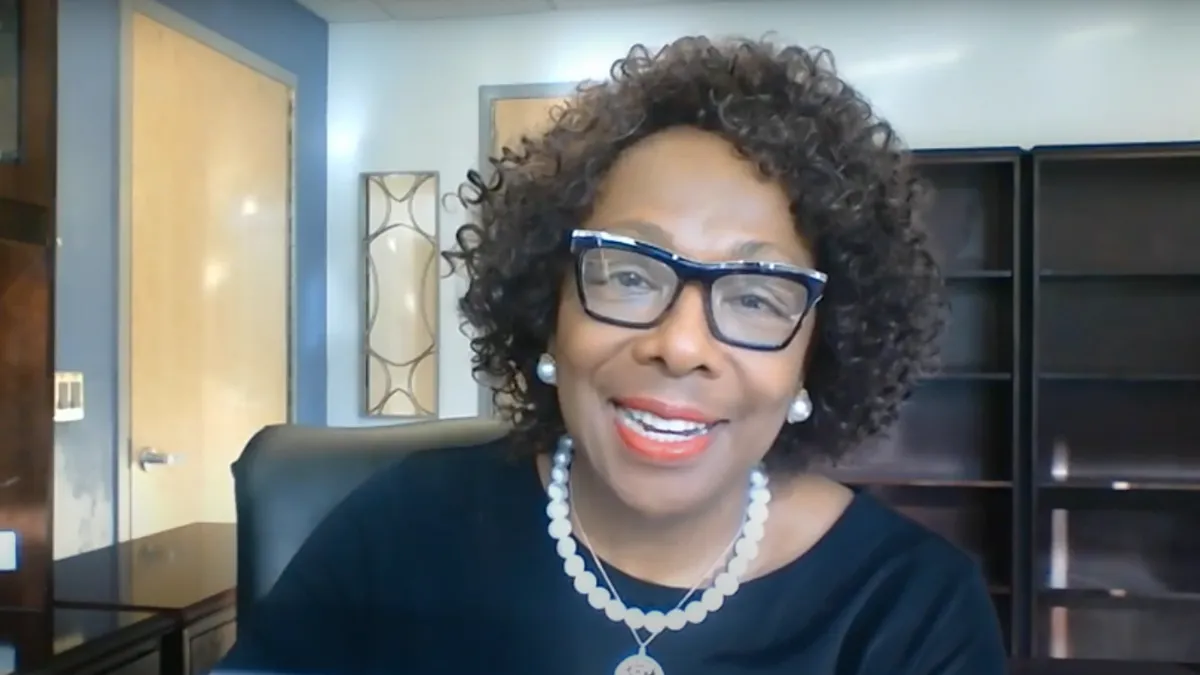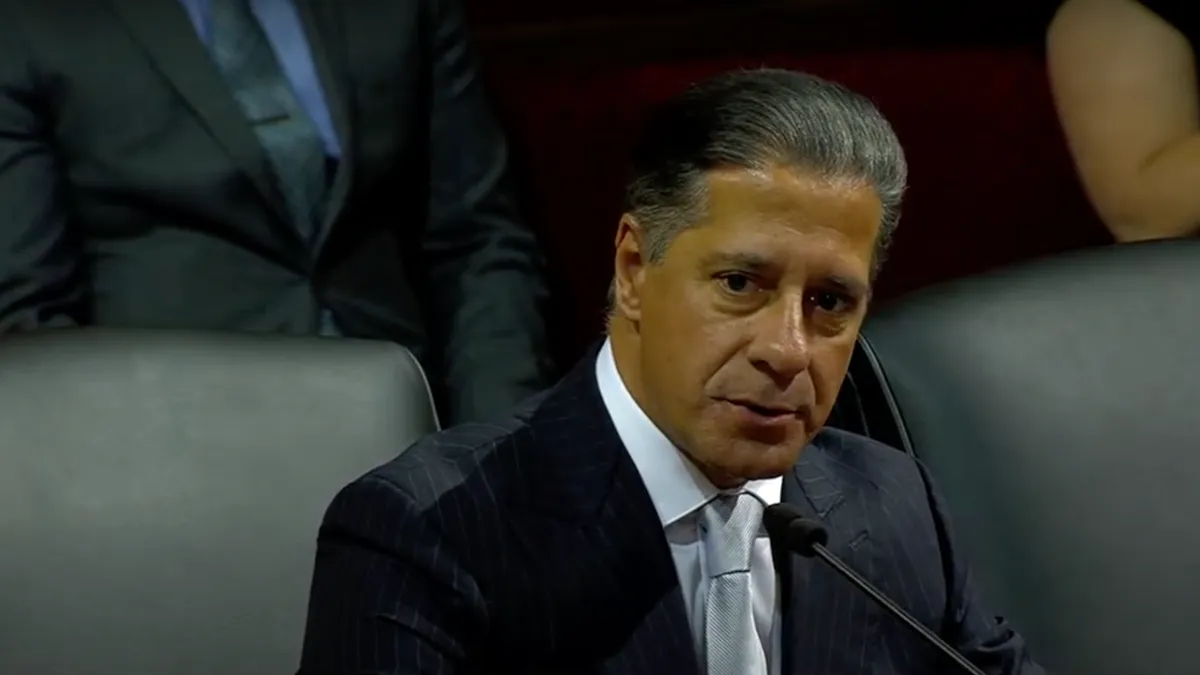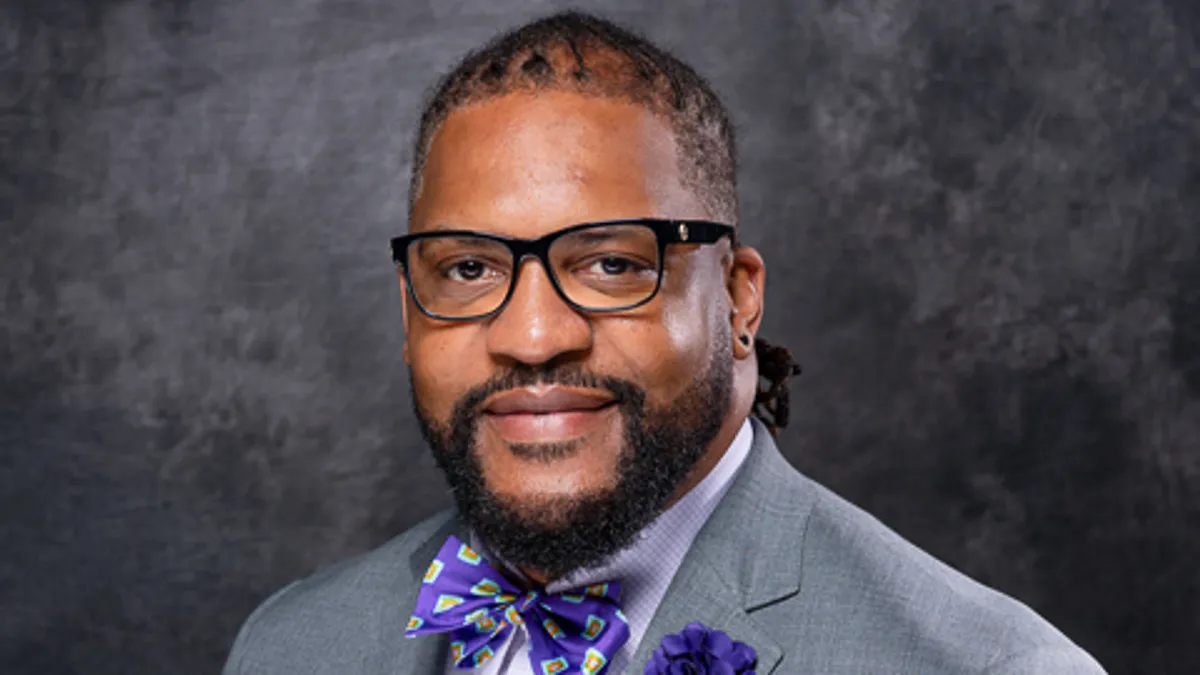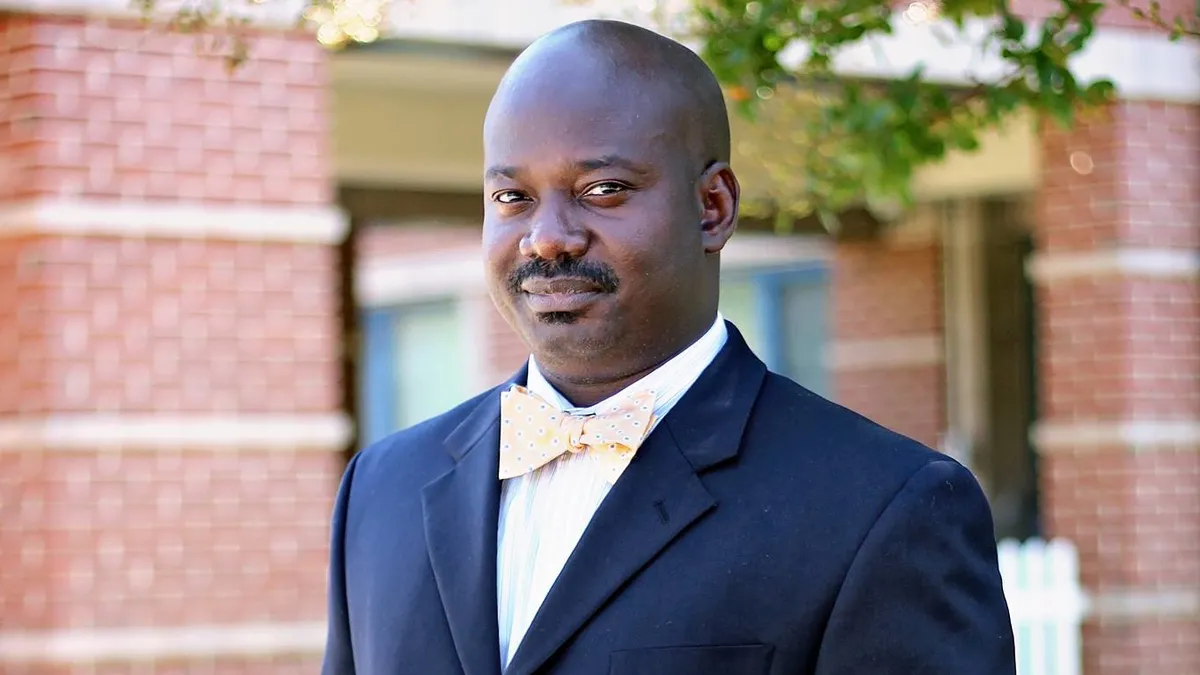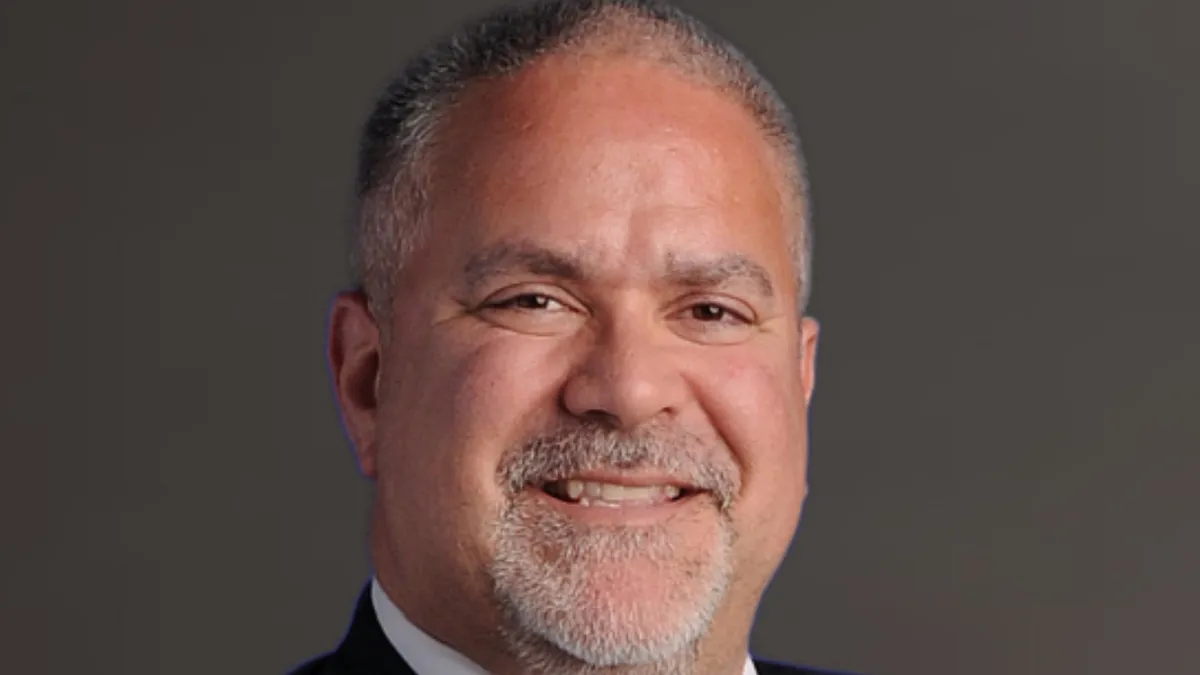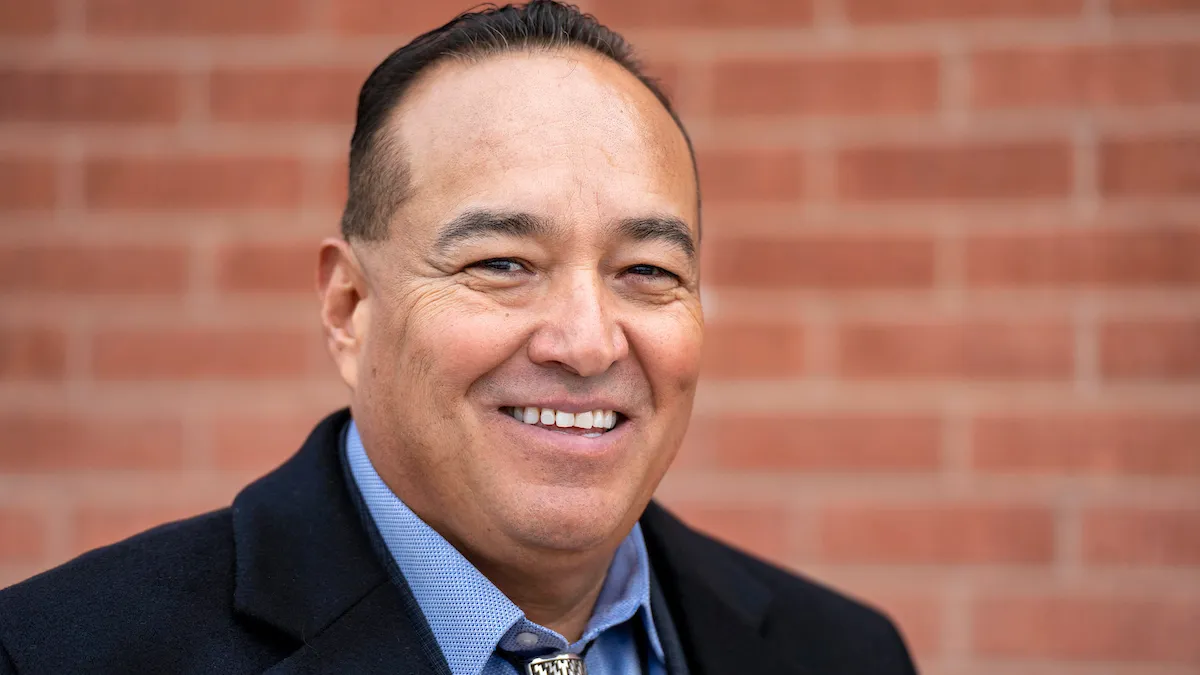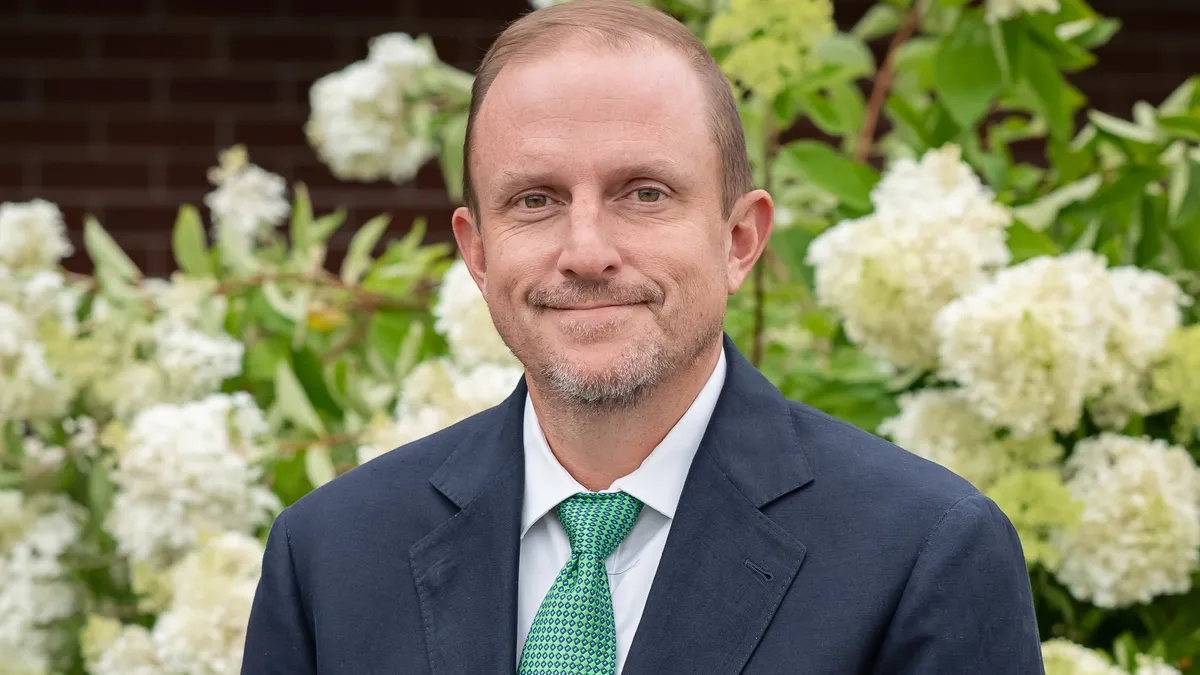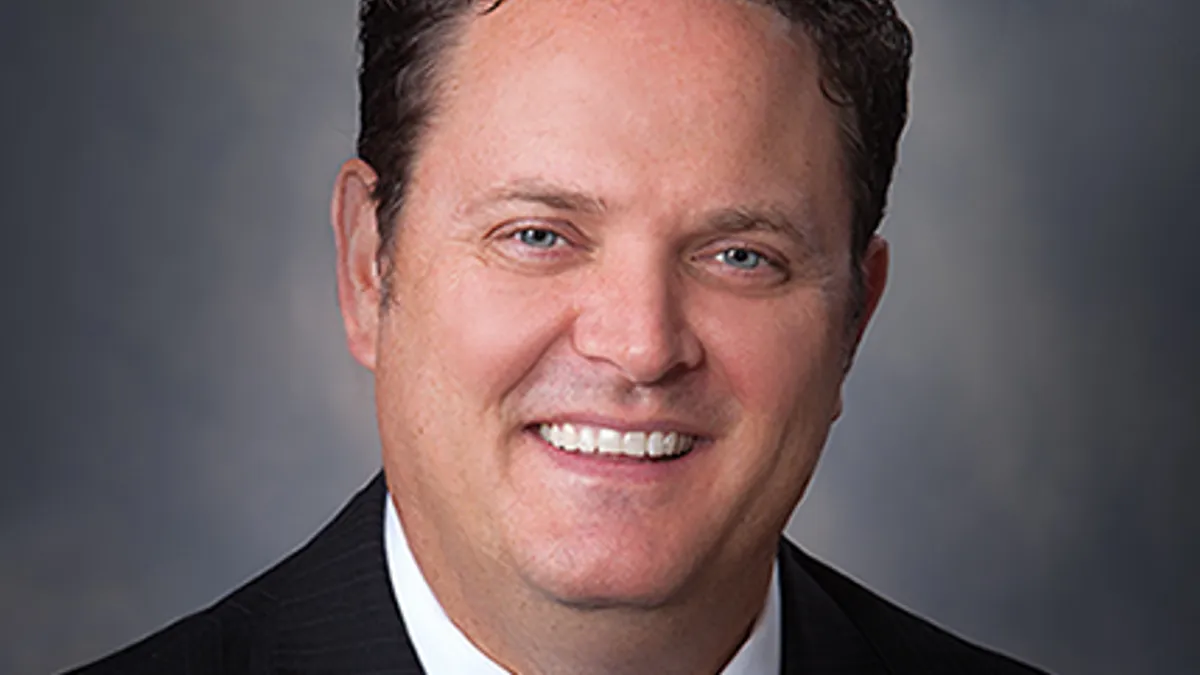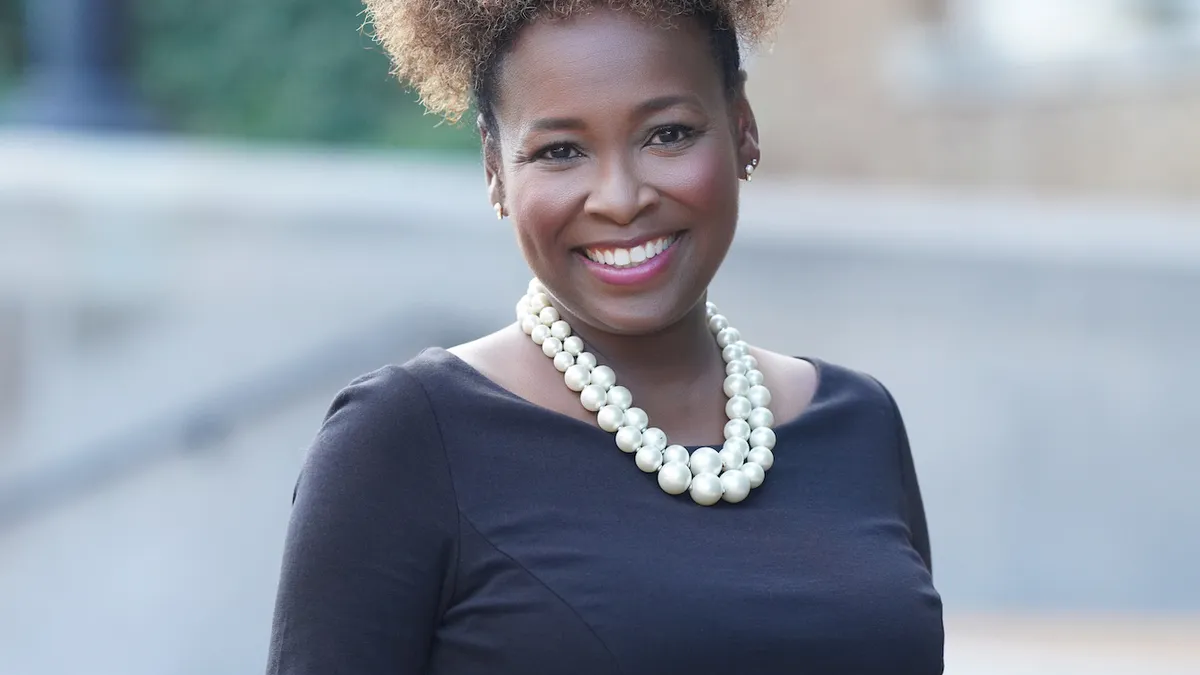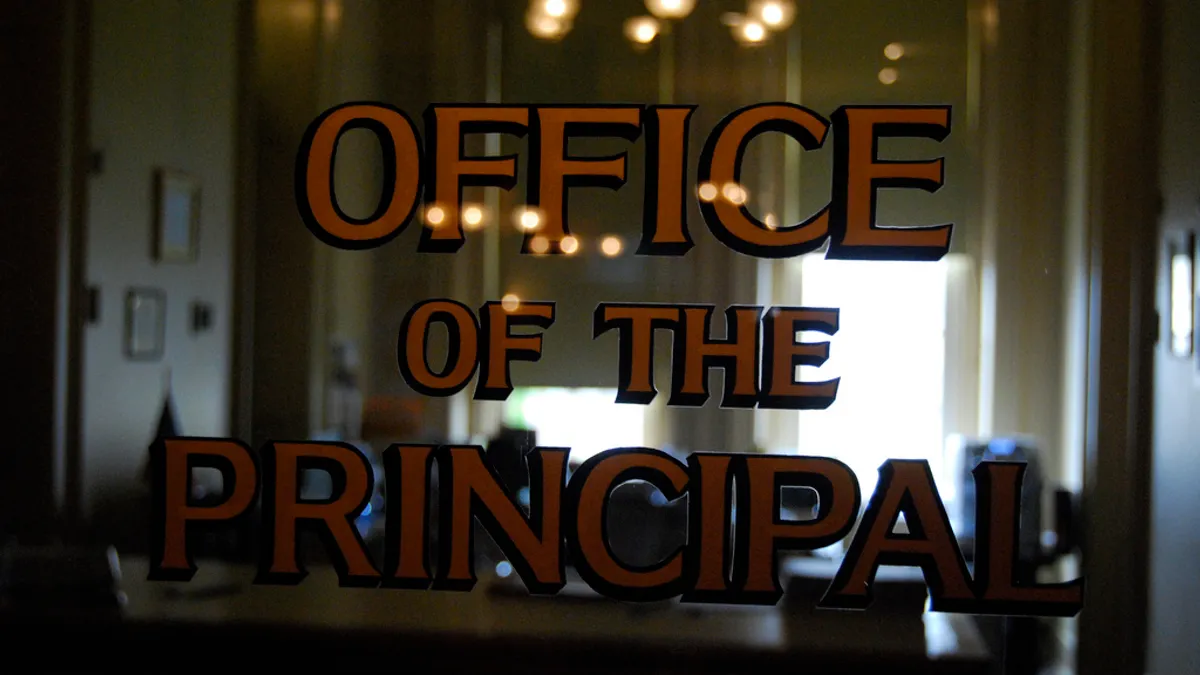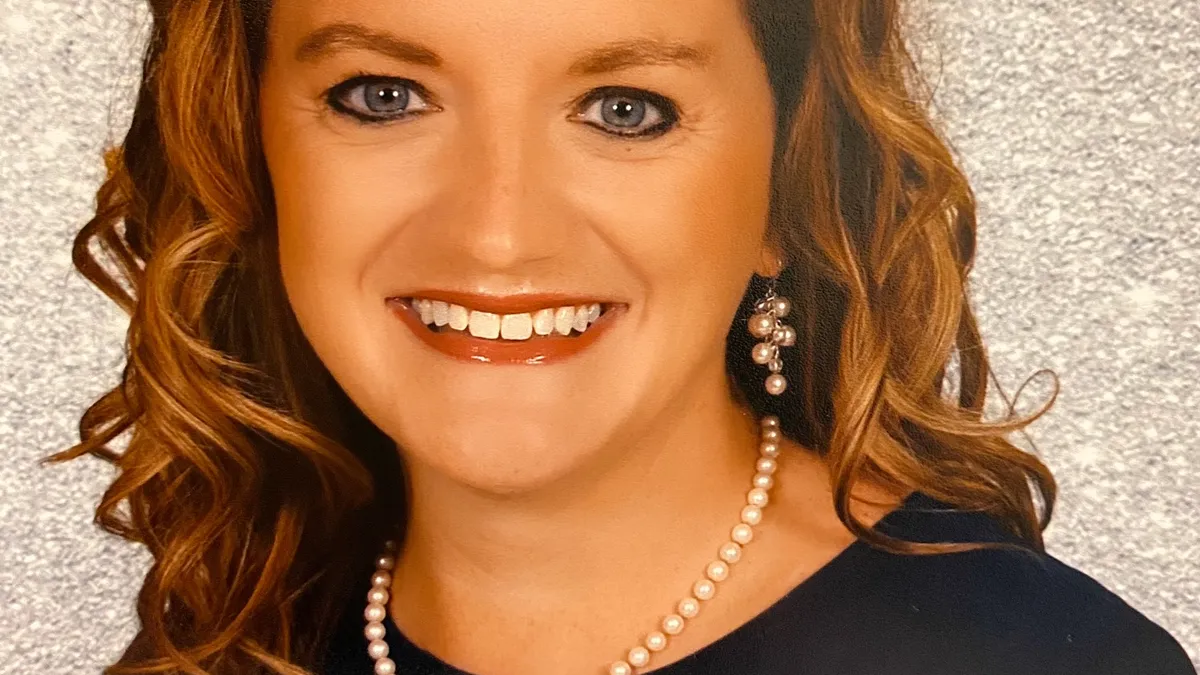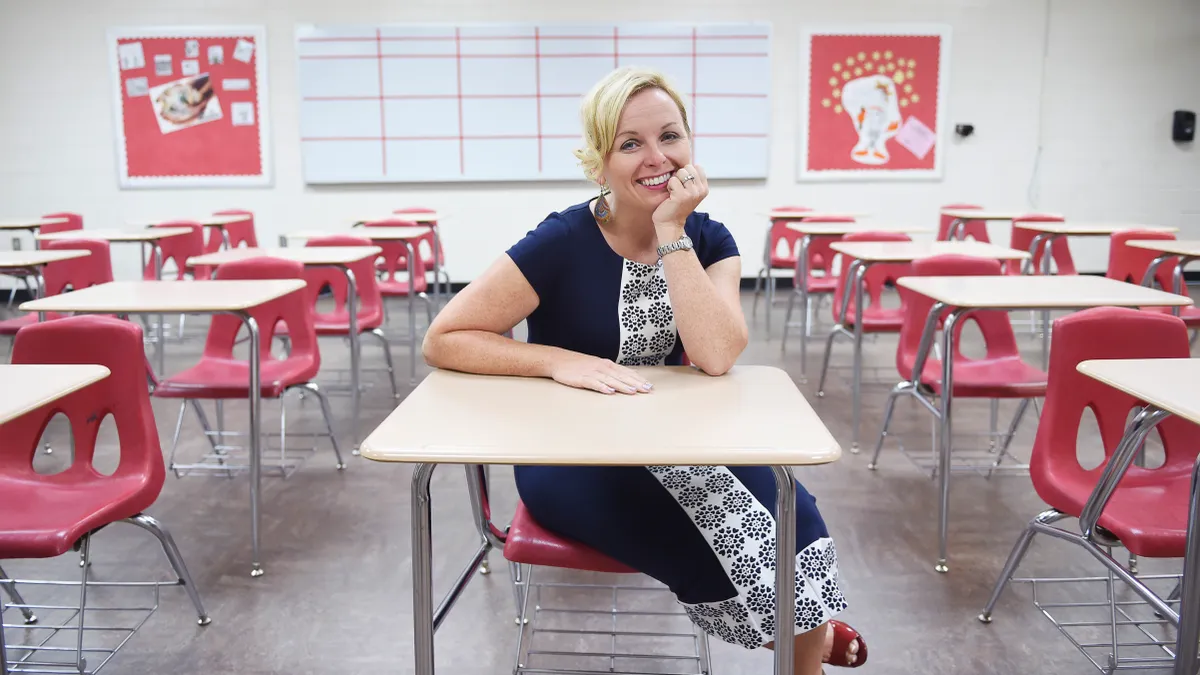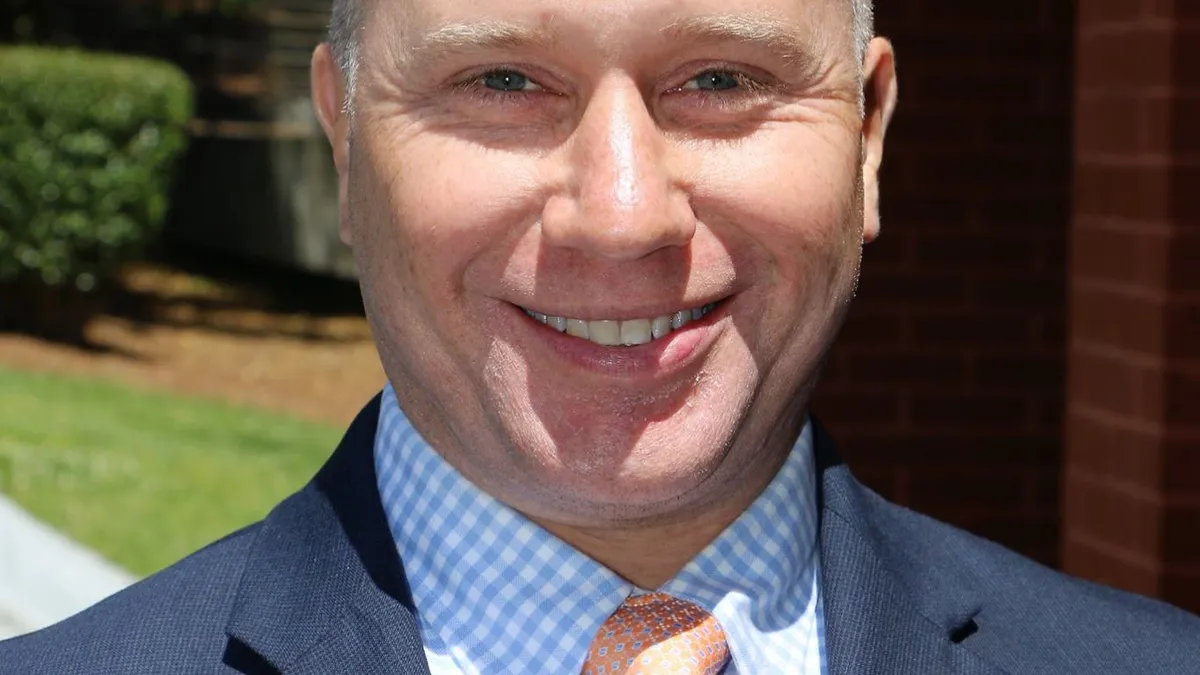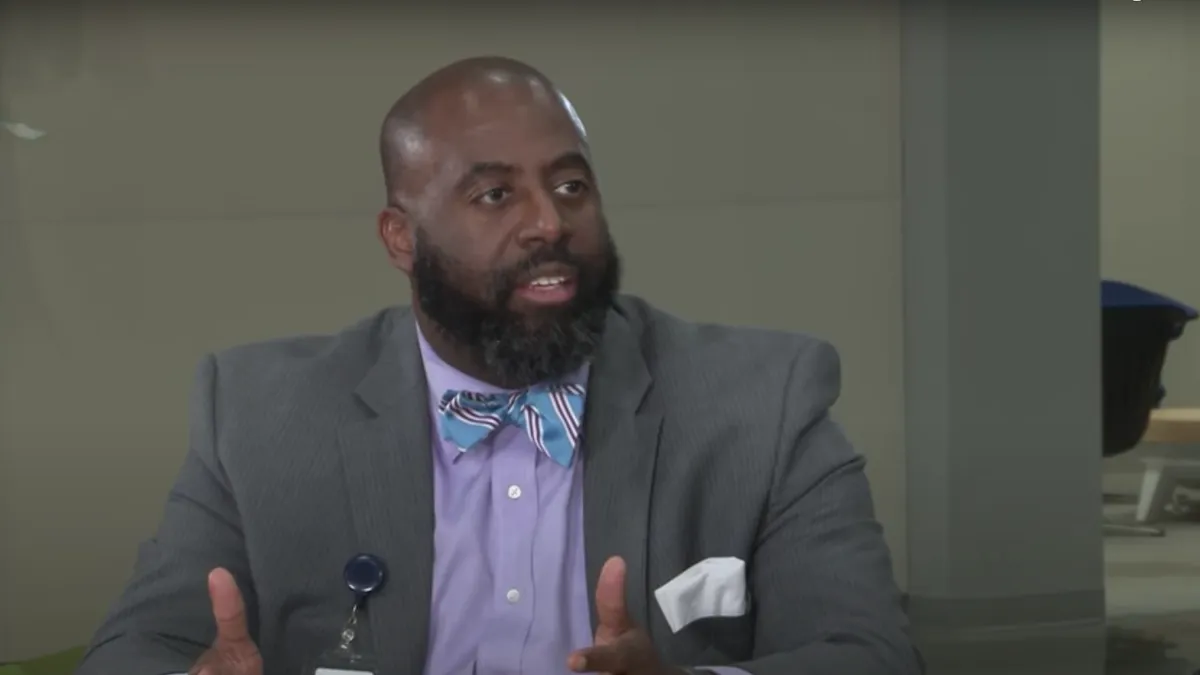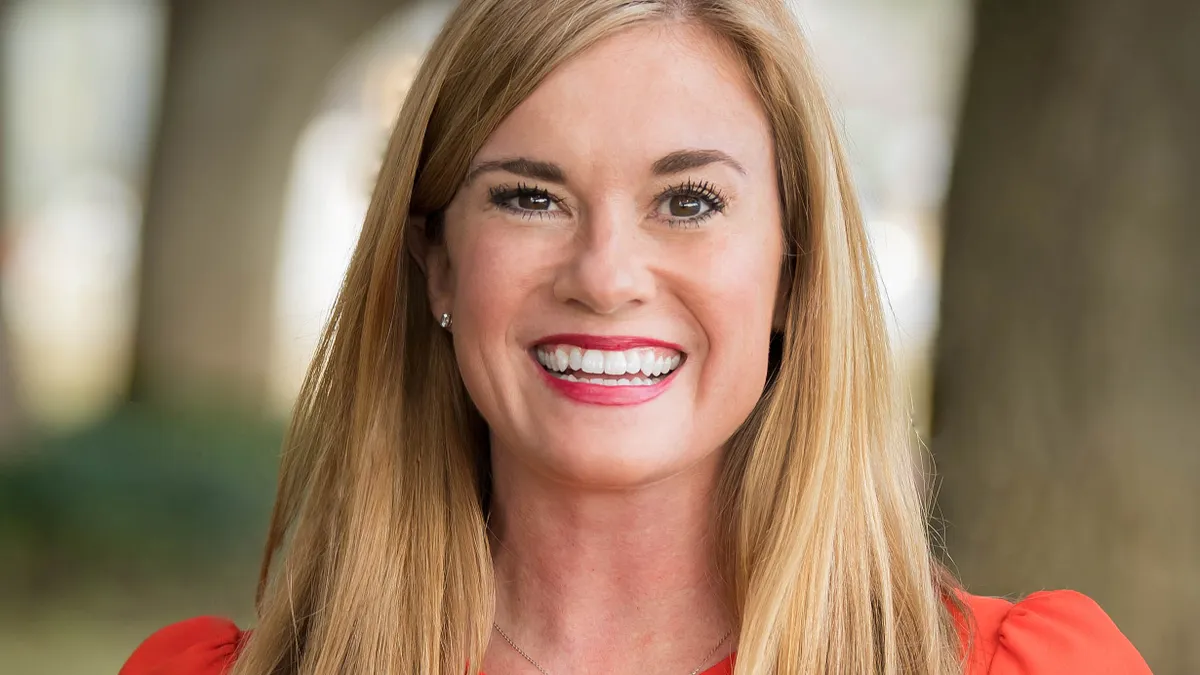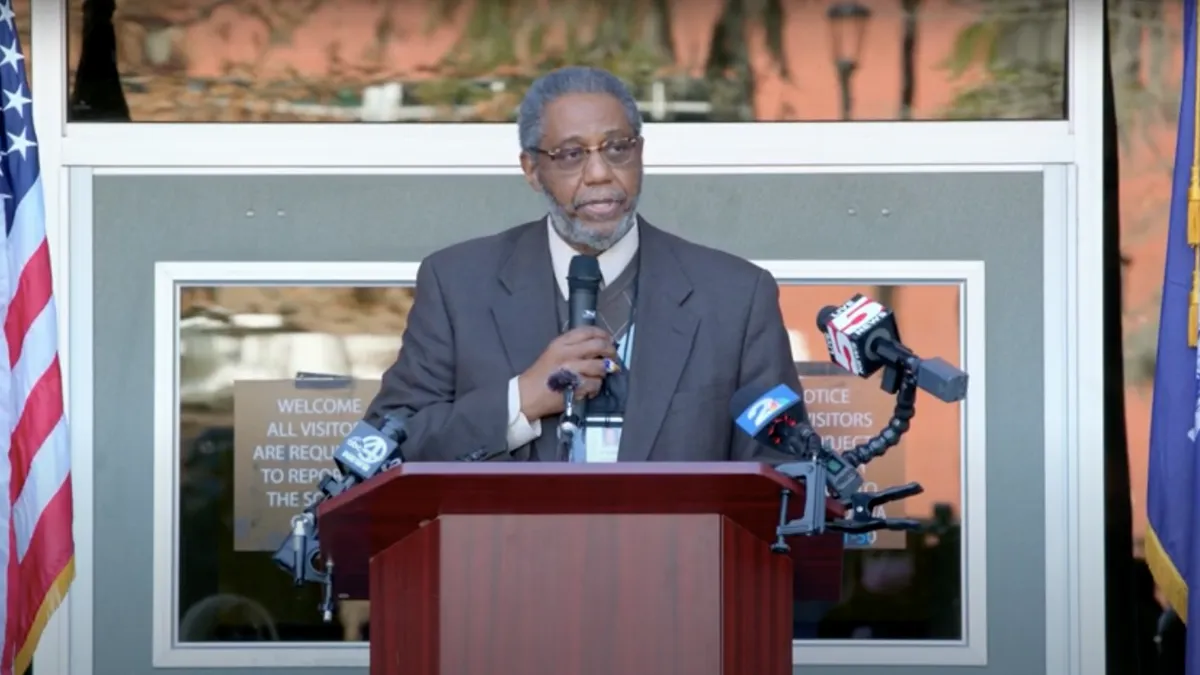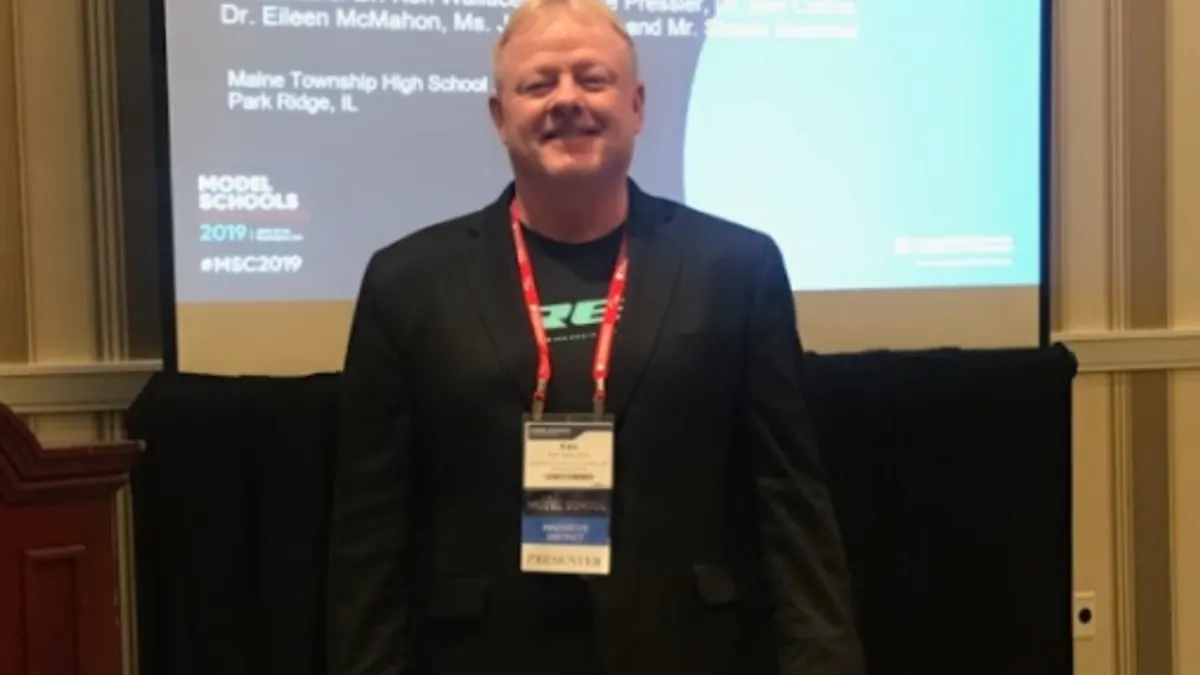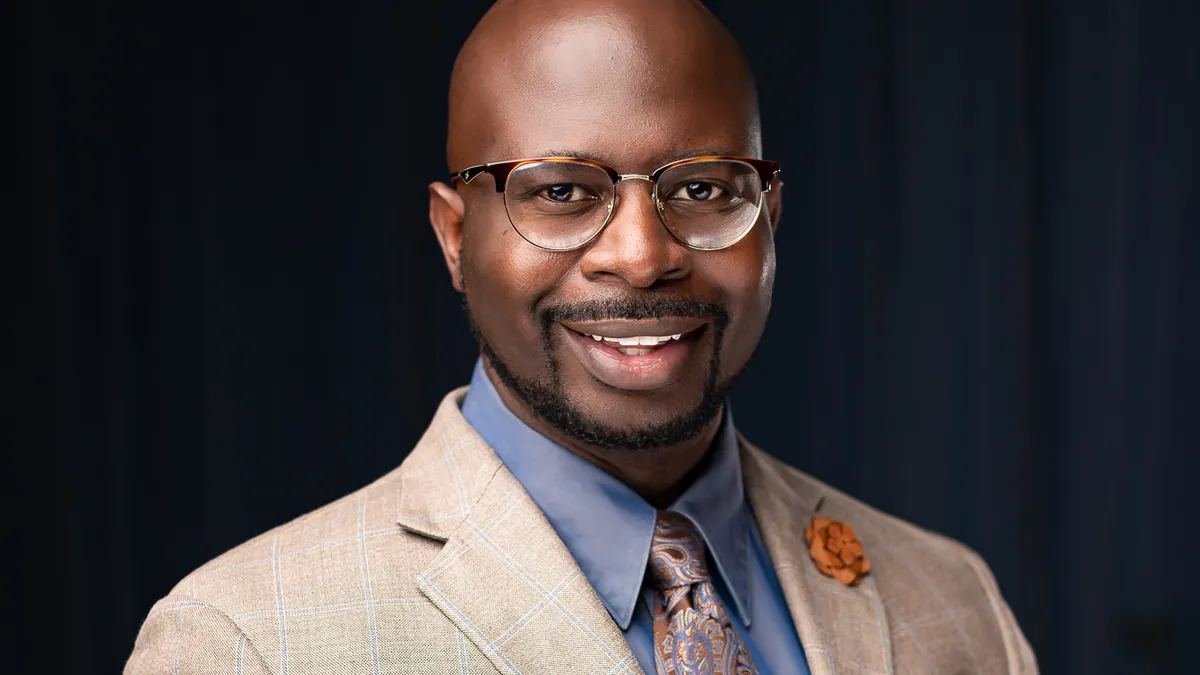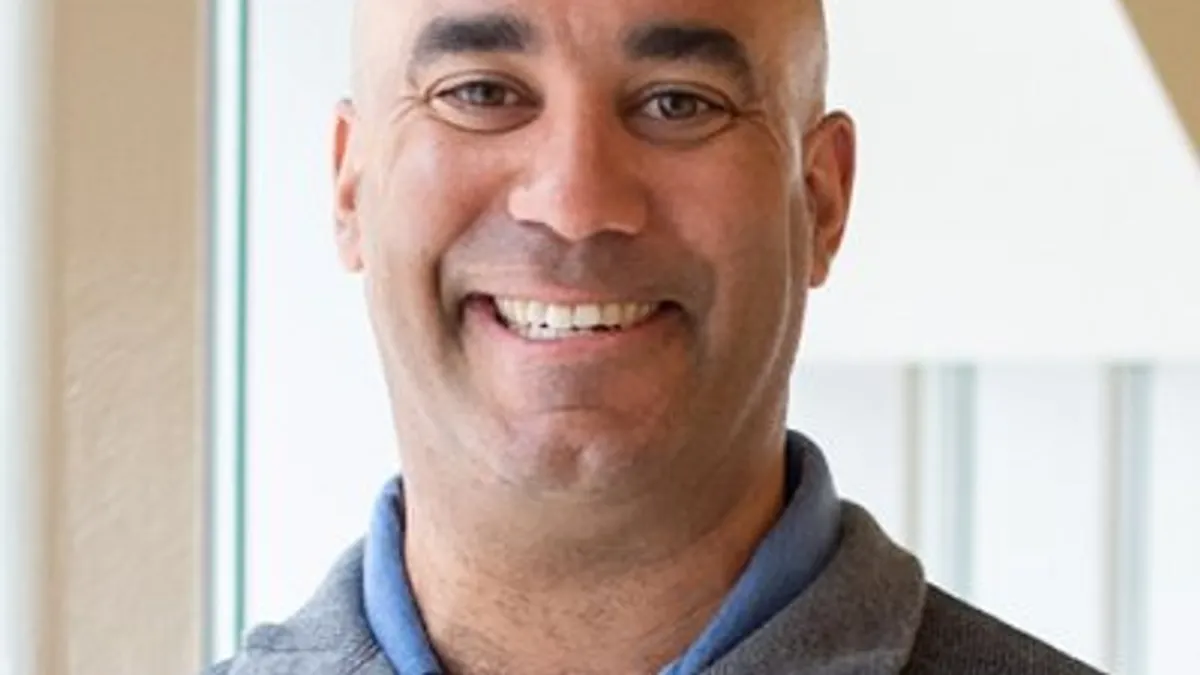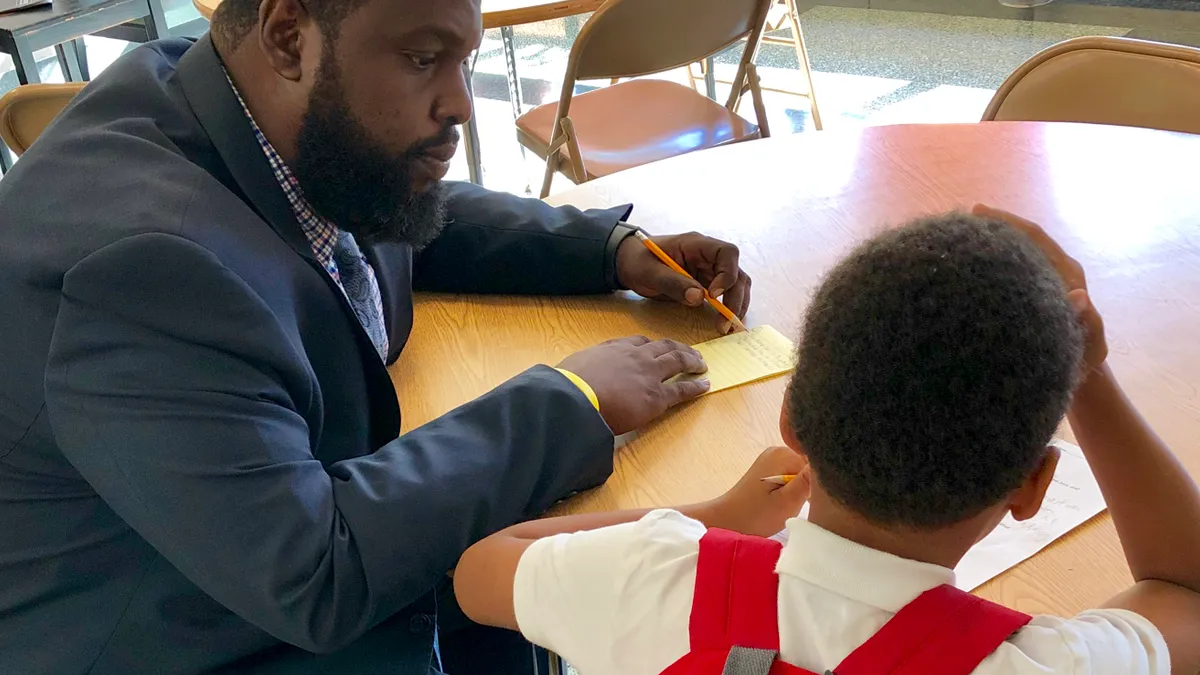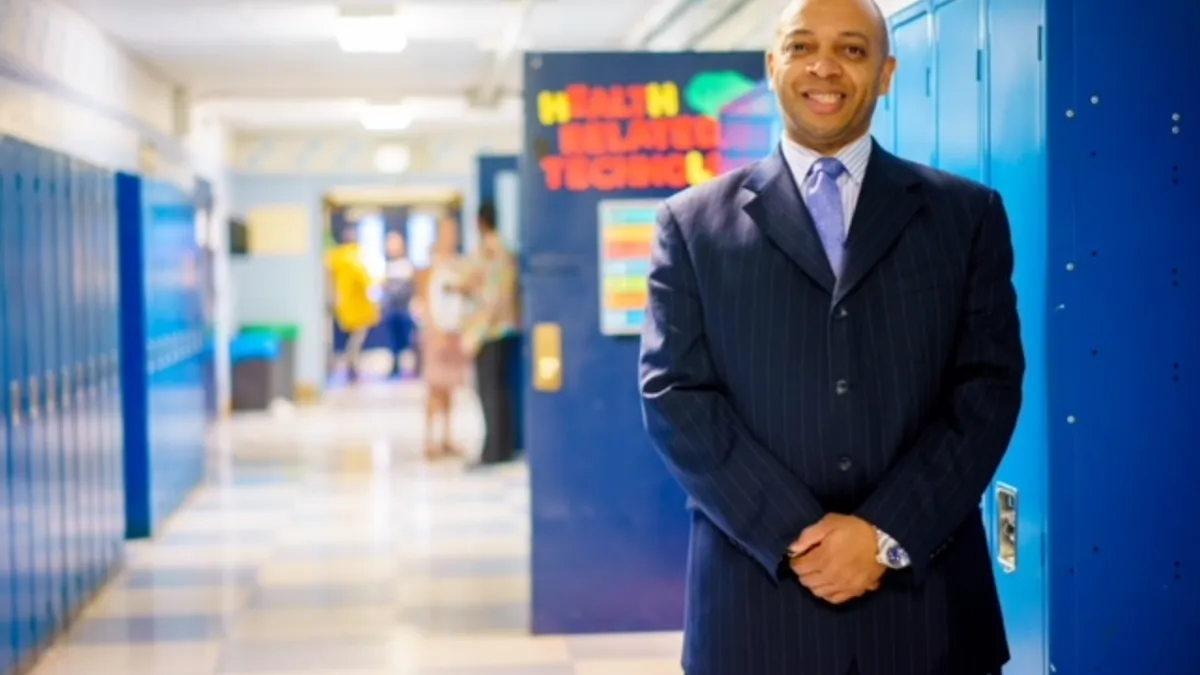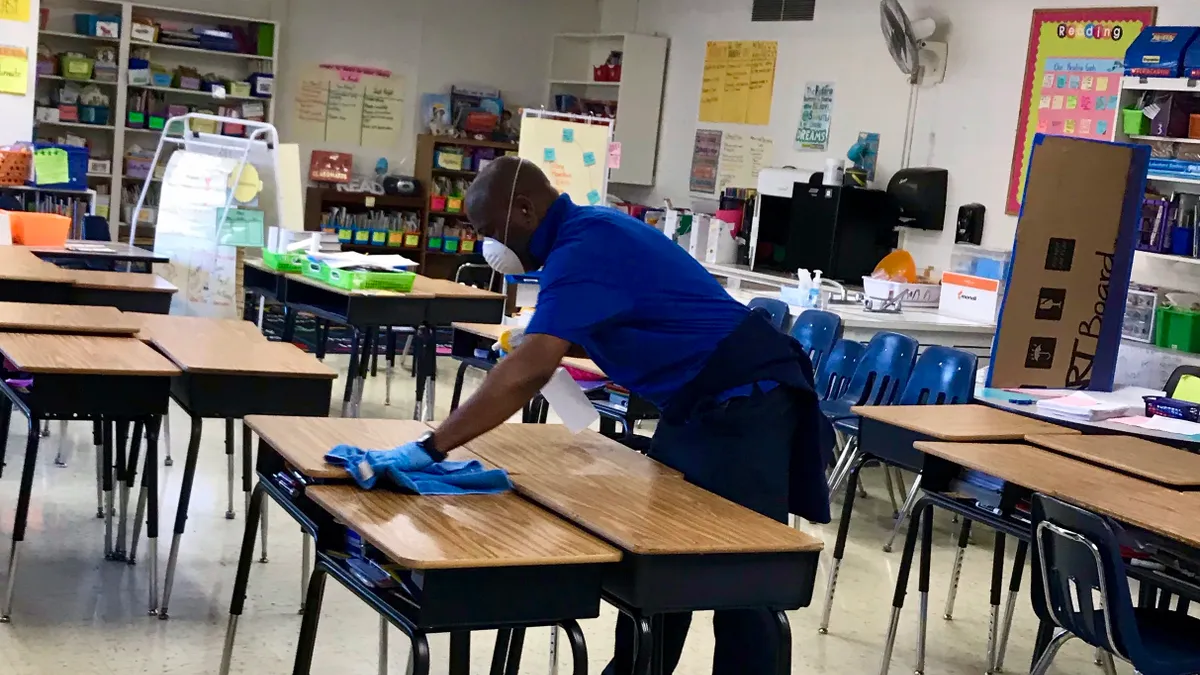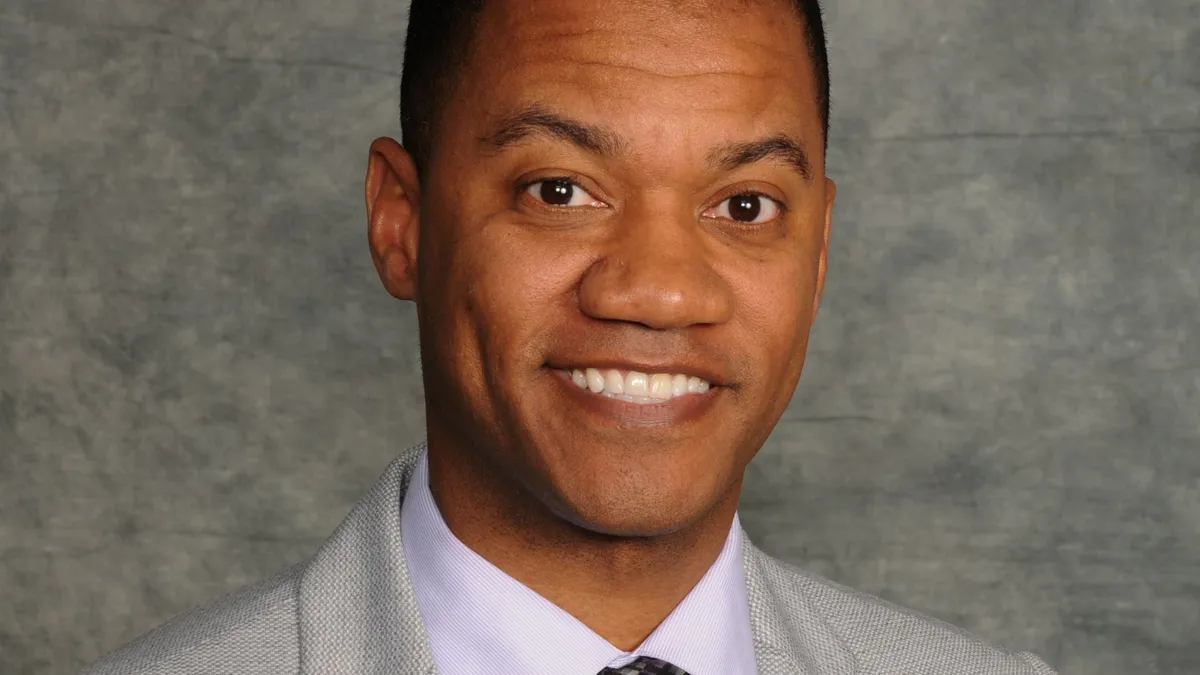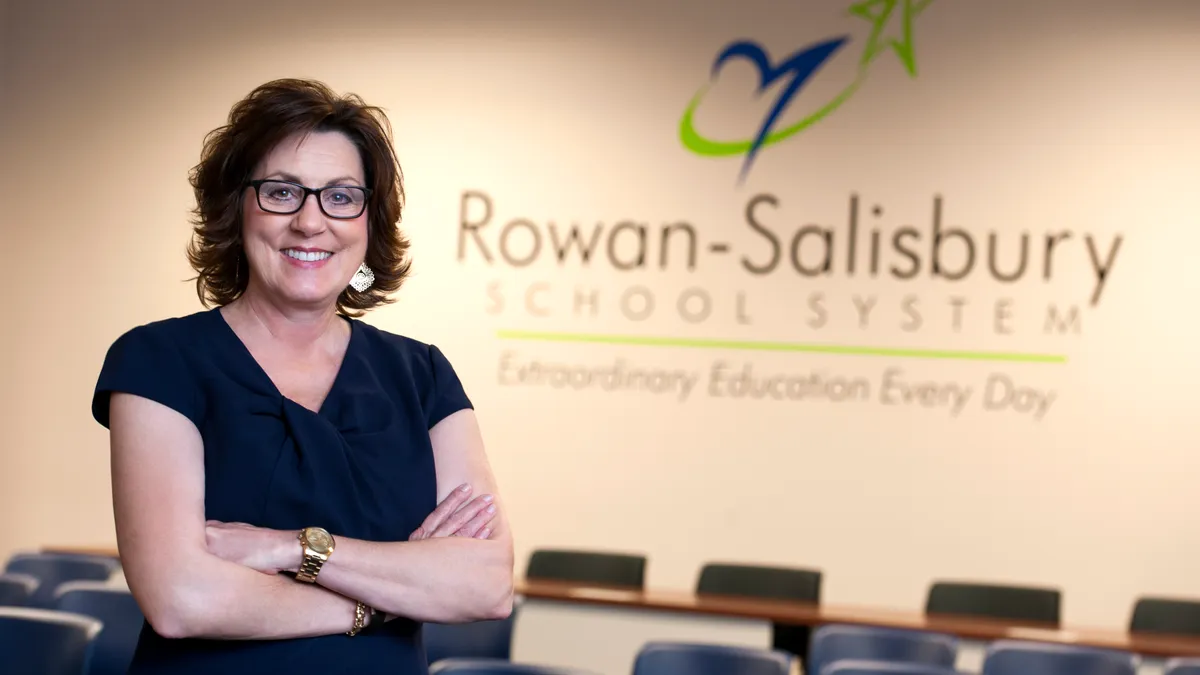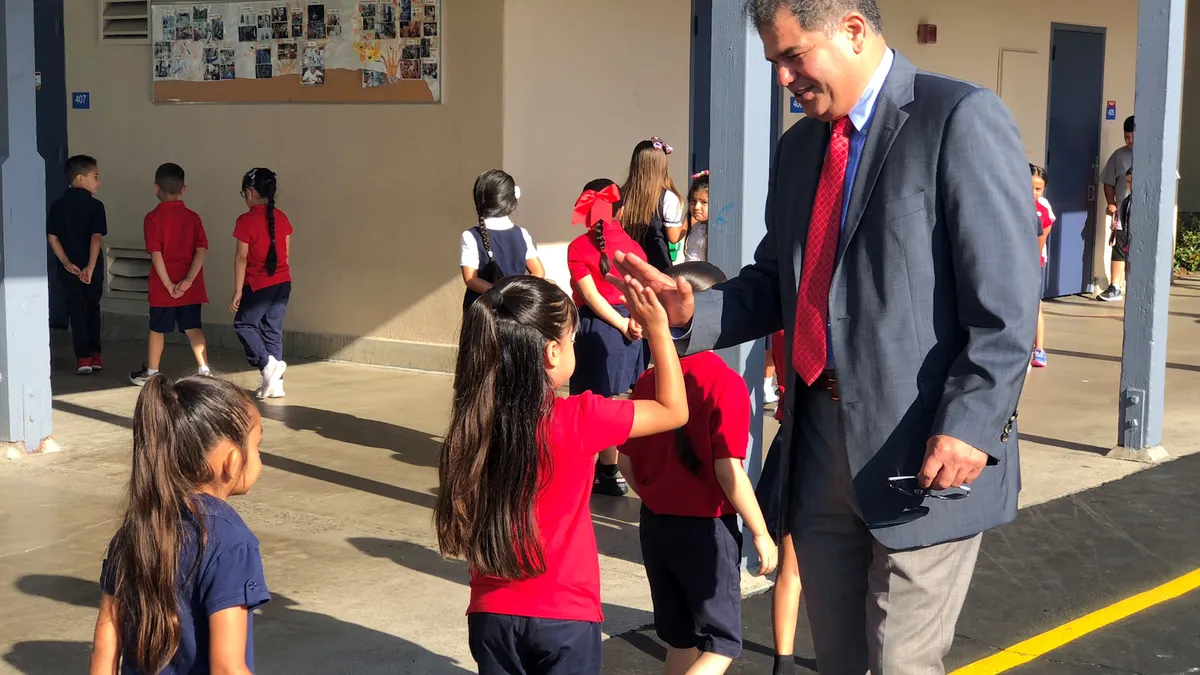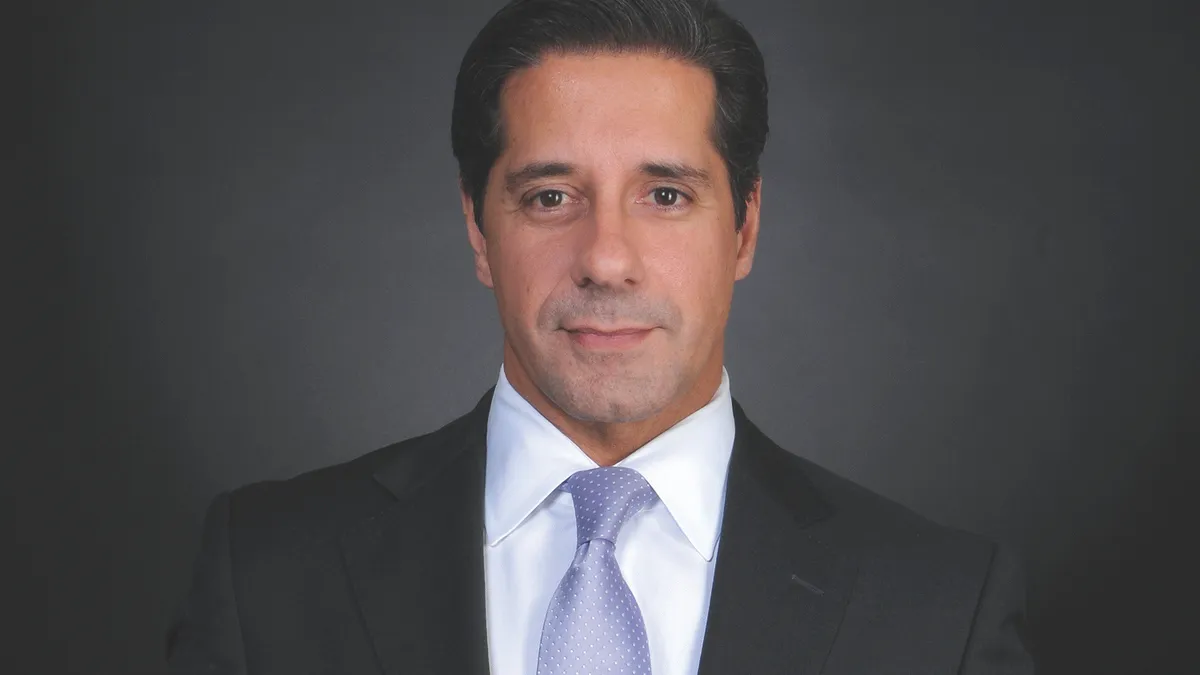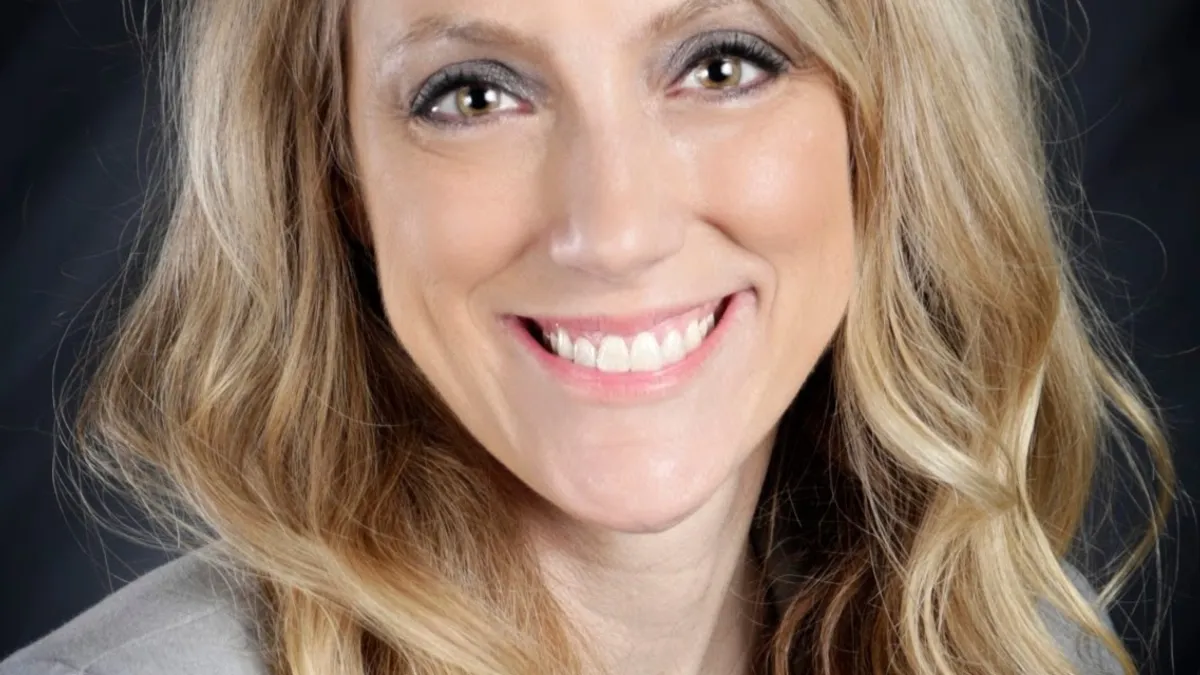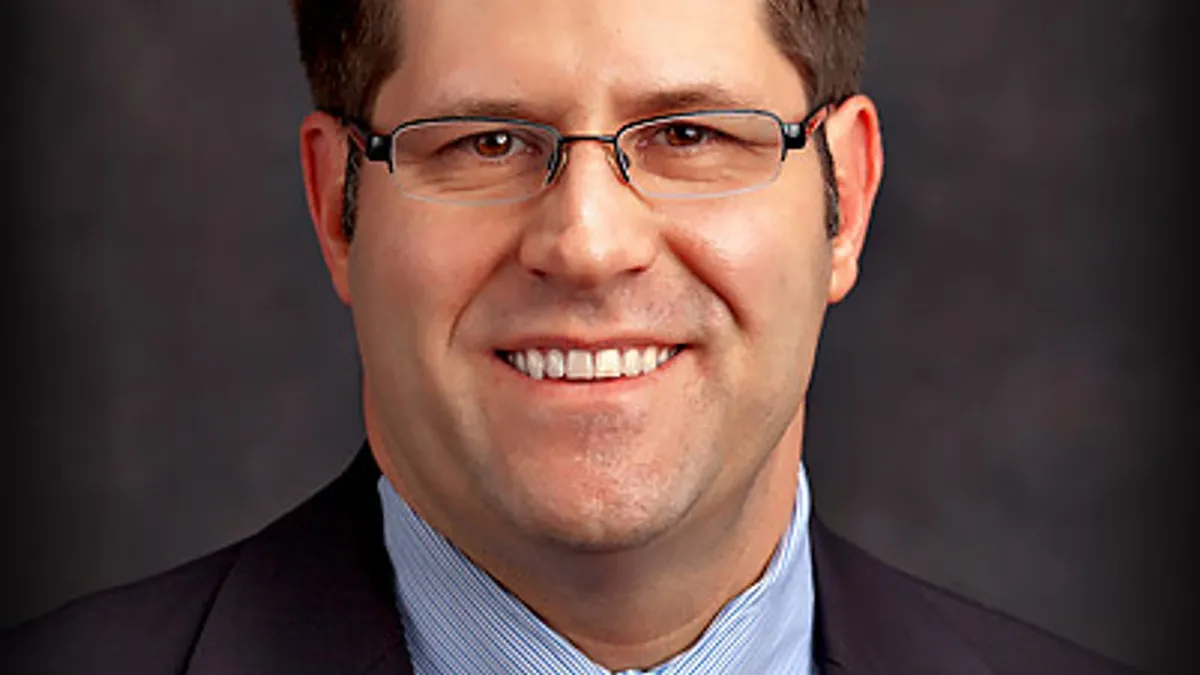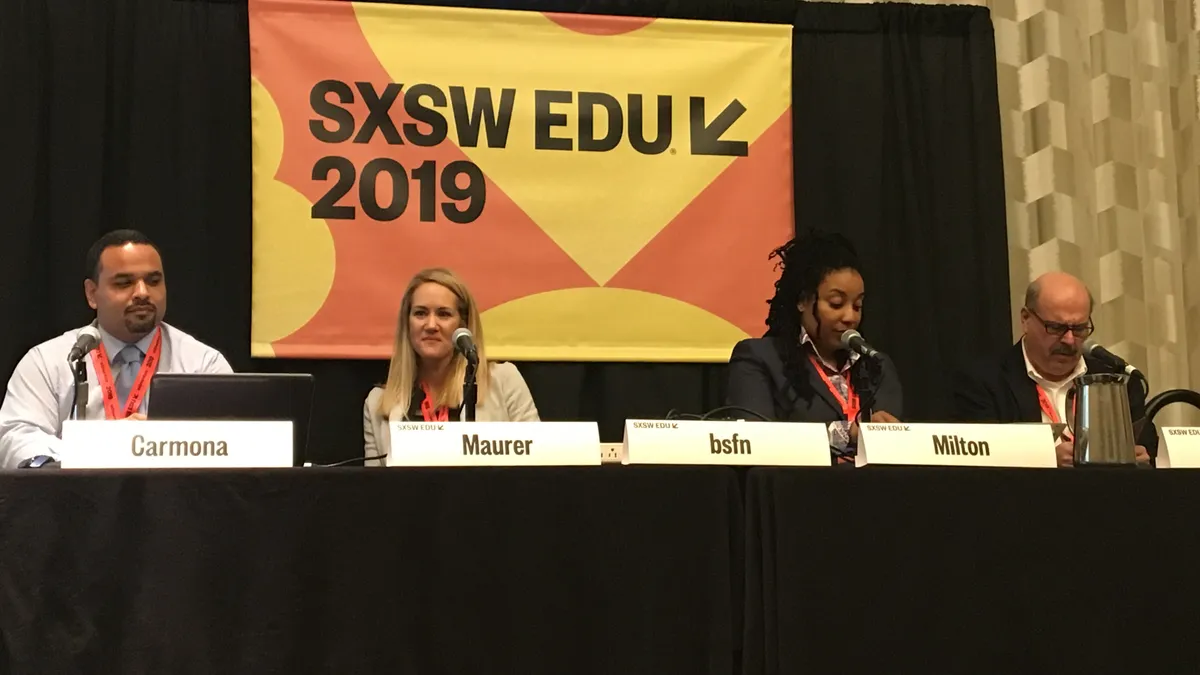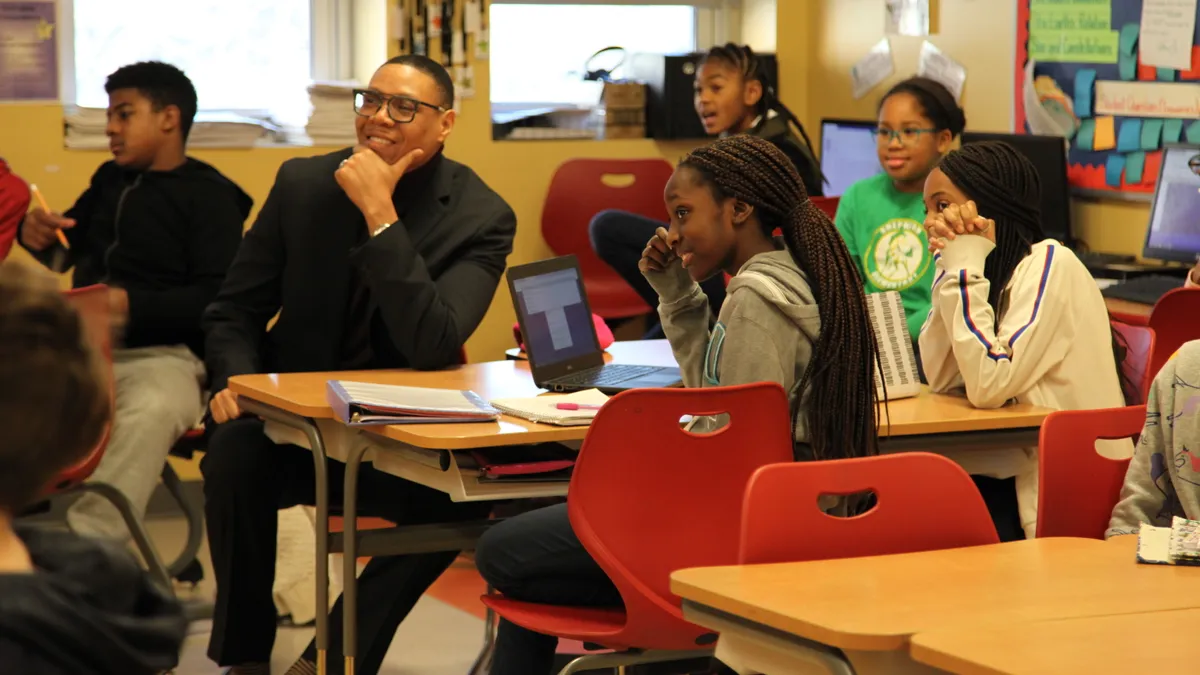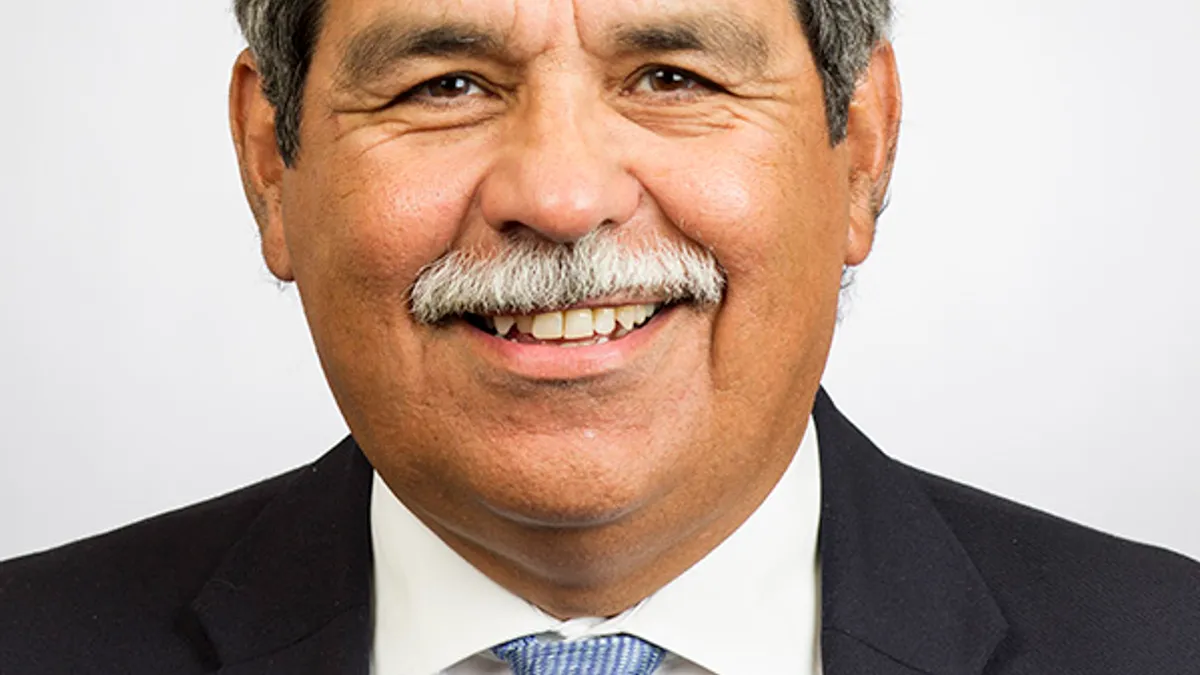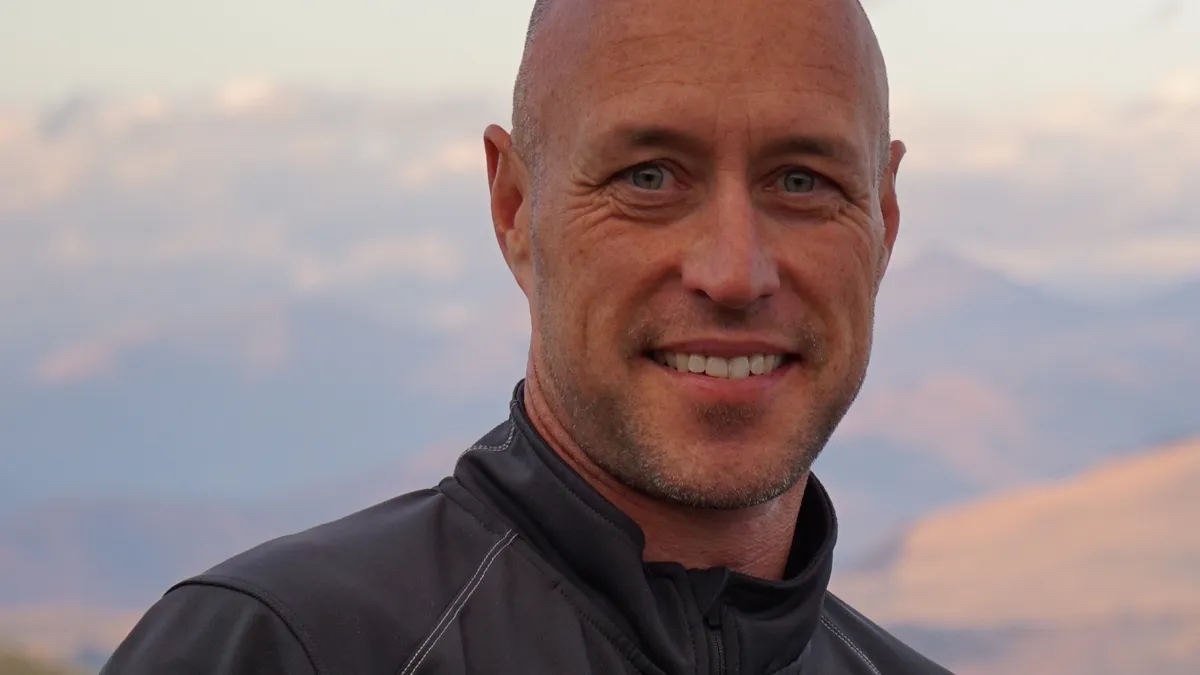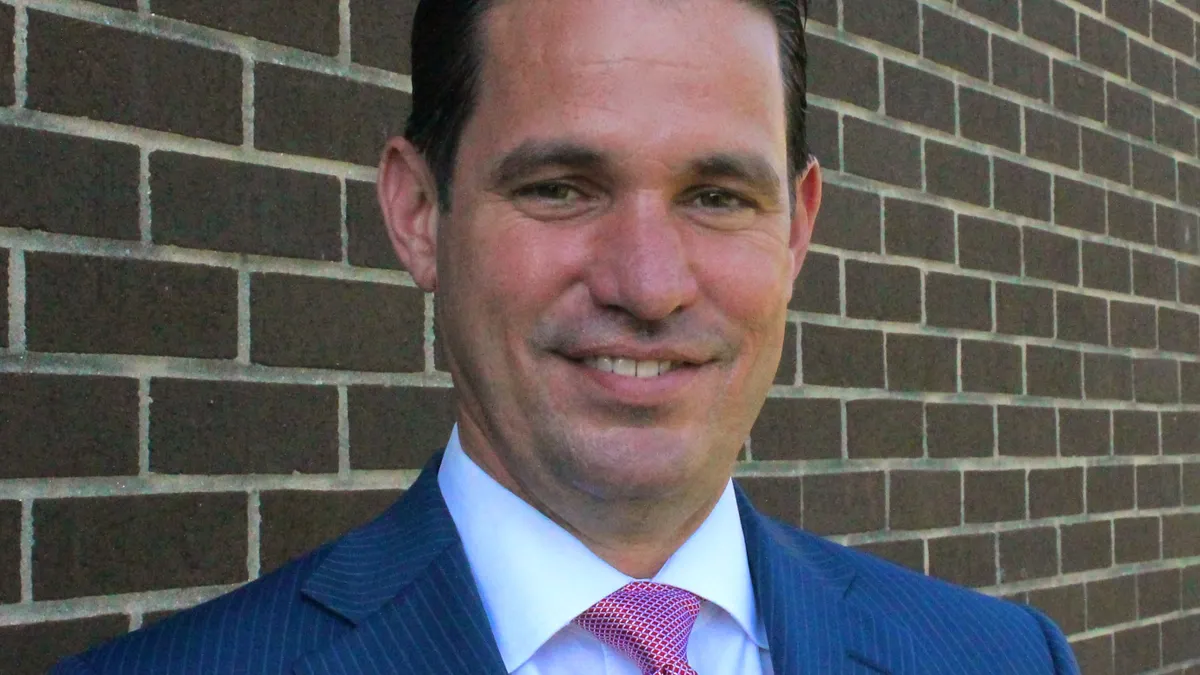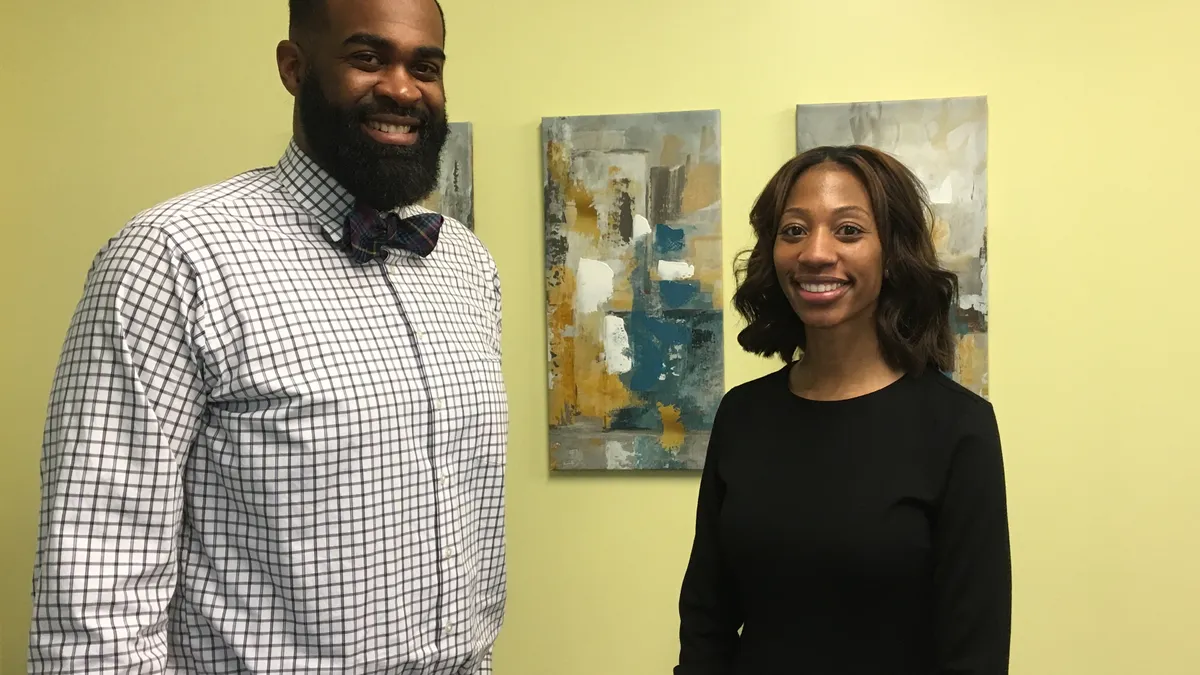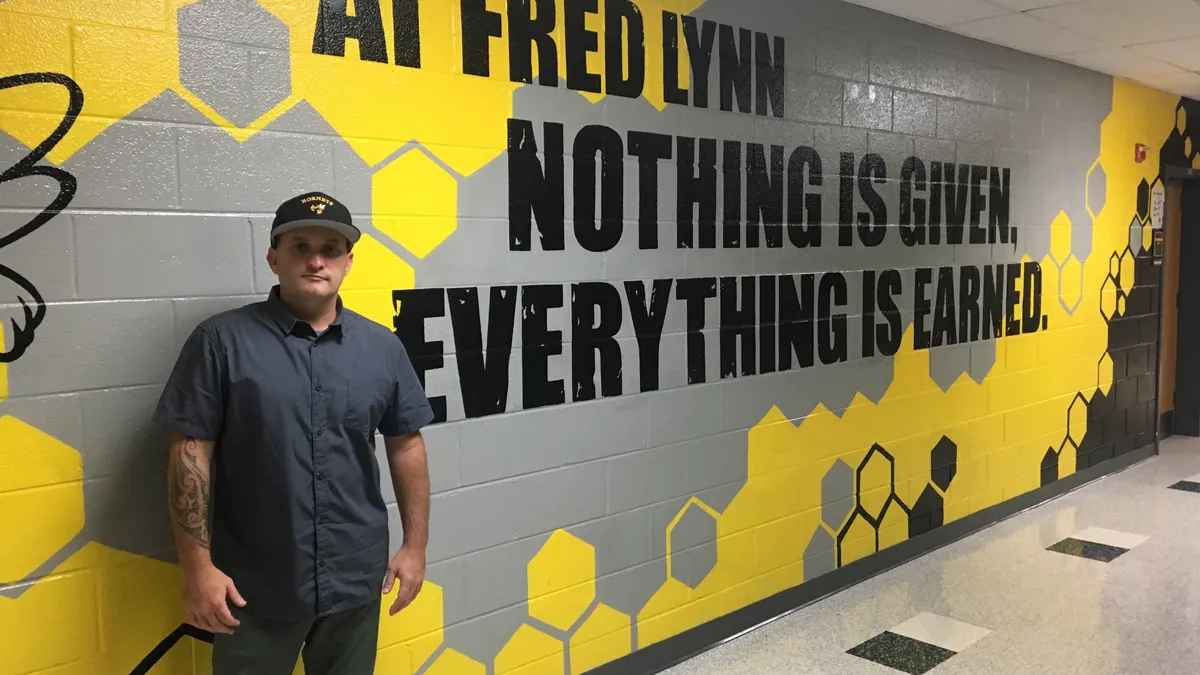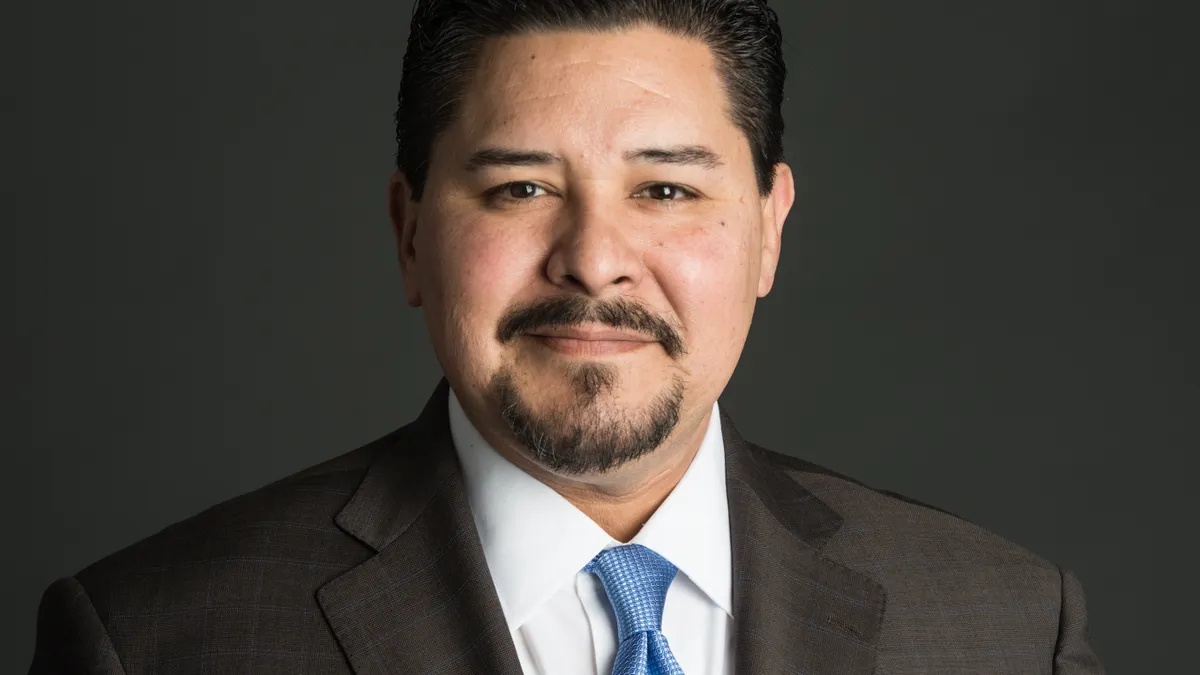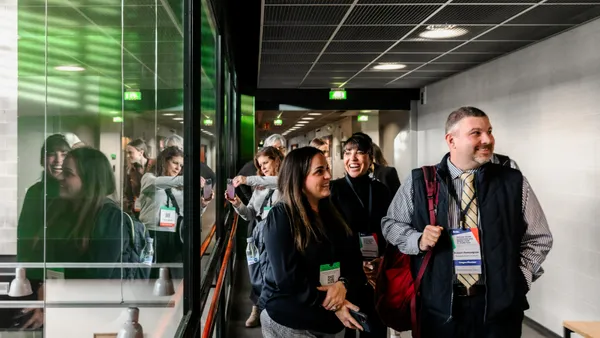Lessons In Leadership is an ongoing series in which K-12 principals and superintendents share their best practices and challenges overcome. For more installments, click here.
Located in West Texas oil country, Ector County Independent School District faces a number of challenges familiar to many other districts nationwide. It is both urban and rural, serving the city of Odessa and the surrounding areas. Its student population faces a 56% poverty rate, and 77% are Hispanic, with a high population classified as English learners.
"This system was, two years ago, one of the lowest-performing districts in Texas," Superintendent Scott Muri told K-12 Dive recently. "We're here to transform it, to become the highest-performing district in Texas. That's the journey on which we are heading."
The most recent reports available show improvement, with the district rising from a D grade in the 2017-18 school year to a C grade in 2018-19. How the pandemic impacted that progress remains to be seen, but it hasn't stifled Muri's commitment to improving the learning experience for the district's students. Over the course of our conversation, we learned more about the district's approach to serving English learners, engaging parents and solving both economic and geographic home internet connectivity issues.
K-12 DIVE: With a high ELL population, what are some of the approaches you've found over the course of your career that worked really well for helping to raise achievement and increase engagement — both among students and parents, given that language barriers can make it a hard parent population to engage?
SCOTT MURI: It can be, but it doesn't have to be. I think from a programmatic perspective, a strong dual-language program has been one of the most effective ways that I've found in my career to help support the needs of our ELL students.
You know, we want kids to be multilingual. That should be celebrated. And I think in school districts that create environments that support students becoming multilingual, those students end up developing a skill set that I don't even have as a superintendent. I would love to be a multilingual or bilingual superintendent and didn't have that opportunity growing up, but our children have that opportunity. So we celebrate [ELLs’] languages and see that as a possibility that gives them significant opportunities in life. A strong bilingual program really supports language development in their native language as well as the English language.
From a parent support perspective, I have yet to meet a parent that doesn't want what's best for their children. So I think it's meeting parents where they are. We have to move past thinking that parents have to come to school in order to be engaged. There are many ways that moms and dads and grandparents and guardians can be engaged in the learning of their children. You know, simply providing a quiet space for a child to do homework at home is parent engagement. Talking to your children at home about their day is parent engagement. Traveling with your child and exposing them to the world in which we live is parent engagement.
So there are many ways moms and dads can be involved. It's up to us as school systems to open up all of those avenues and better understand the variety of ways in which parents can be engaged in the education of their children.
Over the past 16 months, engagement was also particularly an issue for a lot of school districts. What were some of the steps that you took in Ector County to improve engagement during all of the disruption of the pandemic?
MURI: One thing was to empower parents to understand how to support their children in this remote learning environment. In March of 2020, 100% of our students suddenly shifted from face-to-face to completely remote, and mom and dad or guardian had to play a much more integral role.
Well, many of them didn't know how to do that. One of our responsibilities was to equip parents with specifically what to do at home. So we had teachers and administrators who made videos of how to set up a home learning environment for your child and what should that space be. We helped parents with the technology. We provided devices and broadband for all of our children and provided instruction for parents on how to appropriately use those tools or monitor those tools for their children.
So, a whole lot of teacher connection. We ensured our teachers maintained regular communication using the tools and technology not only with their students, but with parents as well.
And then we also lost some kids — they kind of fell off the radar. So we activated our social workers and counselors, as well as our police officers, to do welfare checks on children we were unable to connect with electronically or using the telephone, if you will. Then we did visits and, again, incorporated counselors, social workers and even our police officers just to make sure kids and families were OK. We did a lot to make sure our families were engaged in the learning process.
One thing that's jumped out to me over the past year was that there almost had to be a kind of parent professional development. With the greater amount of technology expected to be present in more schools going forward, do you think it'll kind of become the norm to have more trainings for parents on the platforms and technologies their kids are using?
MURI: Absolutely. I think parent education, regardless of the tool, is critically important. Our parents want to be engaged in a way that is appropriate for them. And it's up to us as a school system to really equip our families with the tools and the knowledge necessary so they can be engaged in the right manner.
And yes, technology will continue to play a pretty integral role in the education of children. While some of our parents are highly adept and highly skilled at using those tools, we know in an educational situation, there are software applications we use that parents may not be familiar with. So certainly, we need to continue to provide that education. And that's a body of work for us as a school system.
We recognized early on in the pandemic — this goes back to March 2020 — that from an equity lens, 39% of our families did not have internet access in their home or had limited internet access. It was marginal at best. And so our first body of work was ensuring every single family had high-speed broadband in their home.
Part of our community is urban. We live in a city. And then part of our school system is fairly rural. In doing our analysis, we realized some of our families that live in the more rural parts of our county didn't have internet access, and it wasn't financially driven. It was simply the internet providers were non-existent or were minimal at best. So that's where our SpaceX connection came in.
We began to search for high-speed broadband options for our families, and we reached out to SpaceX early on. We’re now running a pilot program at our district with 45 families using SpaceX Starlink satellite technology to beam high-speed broadband to our families.
That's one of the bodies of work from an equity perspective that school systems must undertake, ensuring that every family is equipped with the tools they need, whether that is high-speed broadband or knowledge on how to support a child in the learning process. That’s a big body of work for a school system to not only educate children, but also to help parents know how to effectively support kids during the learning process.
How did your district initially get connected with the SpaceX program?
MURI: It started when we understood that 39% of our families were missing internet or had low quality. We began to explore the options: What is the reason for that? And certainly, poverty is part of it. Some of our families simply could not afford the internet, and that was the easiest problem to solve. We quickly were able to access philanthropic dollars and provide broadband access for our families that didn't have it.
But the bigger problem, which caught us off guard a little bit, was that it's not a money issue for some families. It’s simply there isn't anything available. And that was one of those ‘aha’ moments. It's really nonexistent, and that's where the SpaceX solution comes in.
We work with some consultants and a local organization called the Permian Strategic Partnership. It is a collection of large gas and oil industry leaders that are really looking at how to improve the entire Permian Basin region, which is a part of West Texas and New Mexico. One of the areas of focus for them is on infrastructure, and broadband is part of that. They were already, as an entity, looking at solutions for gas and oil, because many of the oil rigs in our area are in outlying, very rural locations. But they need to transmit data on a regular basis, so they were also looking for an internet solution.
Together with the Permian Strategic Partnership, we approached SpaceX and tapped into their pilot program, their beta testing, if you will. And we were able to bring that to our families.
That is one really positive solution we're exploring, but there are others, as well. We’re navigating this work, and we've formed a task force locally made up of city and county leaders and business leaders in our community to explore how we can ensure every family, not just school families, in our entire county that desires to have internet access — how do we ensure that they indeed have that?
That's a big body of work, but important because at the end of the day, from a school district perspective, every child, every family deserves to have this equal opportunity to access high-speed broadband so kids can do their homework, so they can access their peers from home, so they can work collaboratively and develop projects and complete assignments that are given by teachers.
Internet is a part of school. It's here to stay. When school is over, learning continues in the home, and the internet plays a really big and critical role in the continued learning process for our kids.
What advice would you have for districts in a similar situation with connectivity?
MURI: Find pilot programs like that they might be able to become involved in, and also just navigating potential costs that come with that. Solutions are always looking for a good problem to solve, and solutions are out there. It requires, in many cases, innovative thinkers and innovative leaders, and it also involves collaboration. We as an organization, Ector County ISD, did not do this work on our own. We reached out to members of our community. We reached out to organizations statewide and across the country to find solutions for the problems we were faced with during the pandemic.
We're very fortunate to find local, state and national leaders that all had solutions to the problems that were happening locally. So I would encourage other leaders to be broad in their thinking, to be innovative and creative in their thinking. And then to reach out, first, locally and then within your state and the nation to explore solutions that are out there.
There are really brilliant thinkers all across our country that have developed wonderful solutions for problems that exist locally. And we just have to do the work to find those solution providers that are a fit for our local community. [It’s] being big and bold and brave and asking questions and seeking answers, because good thinkers are out there and are looking for folks to partner with.
But it does require work and effort. Absolutely.



